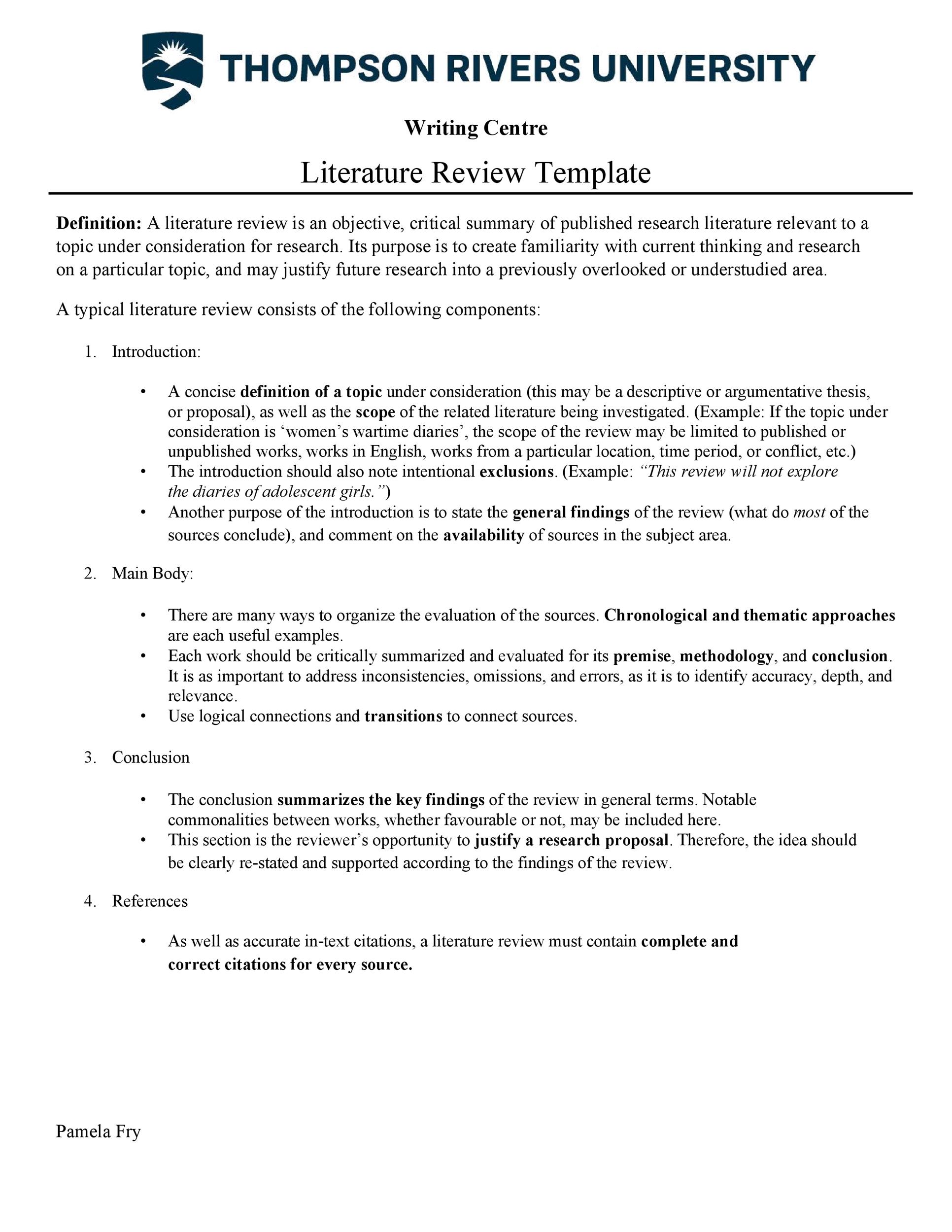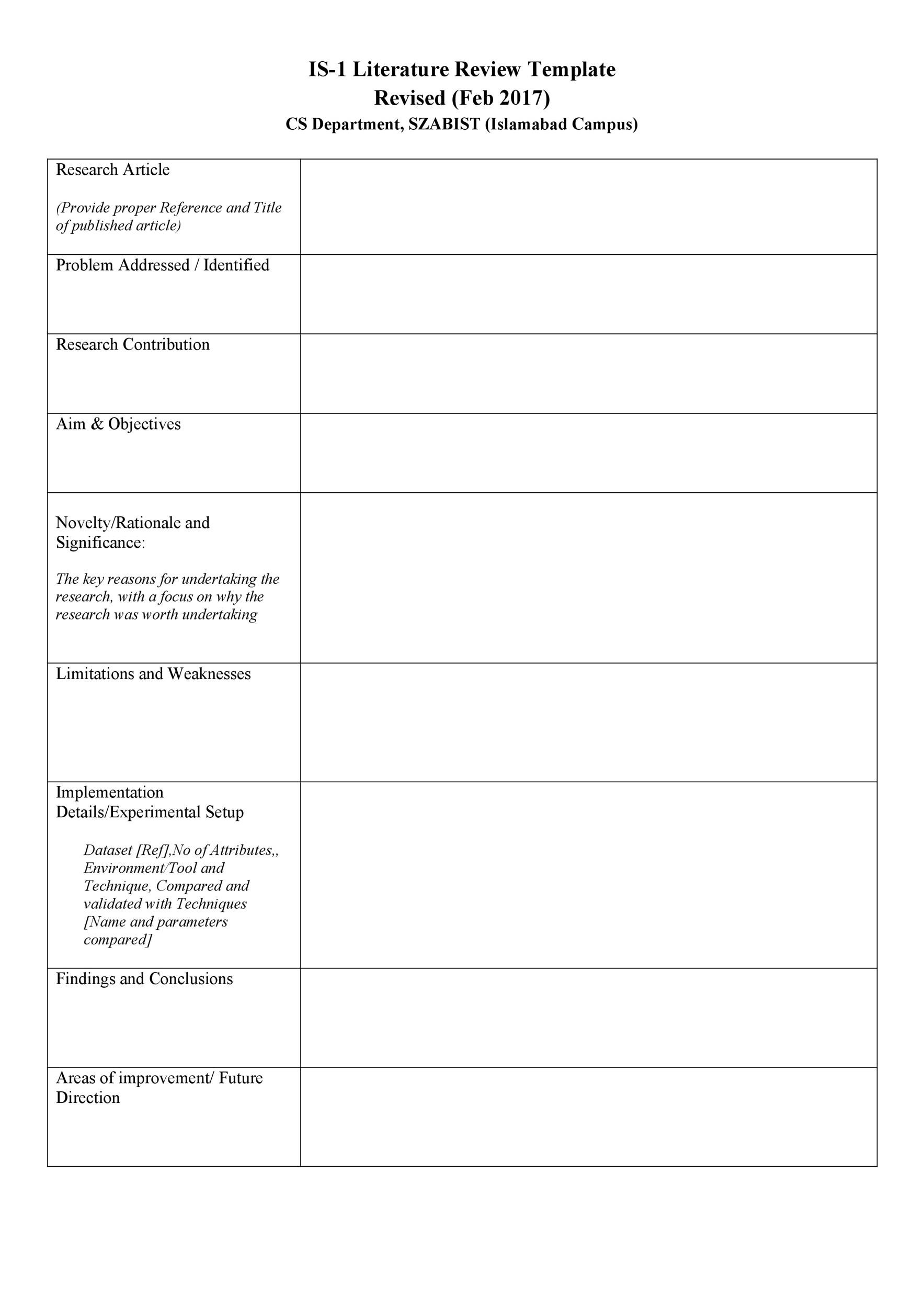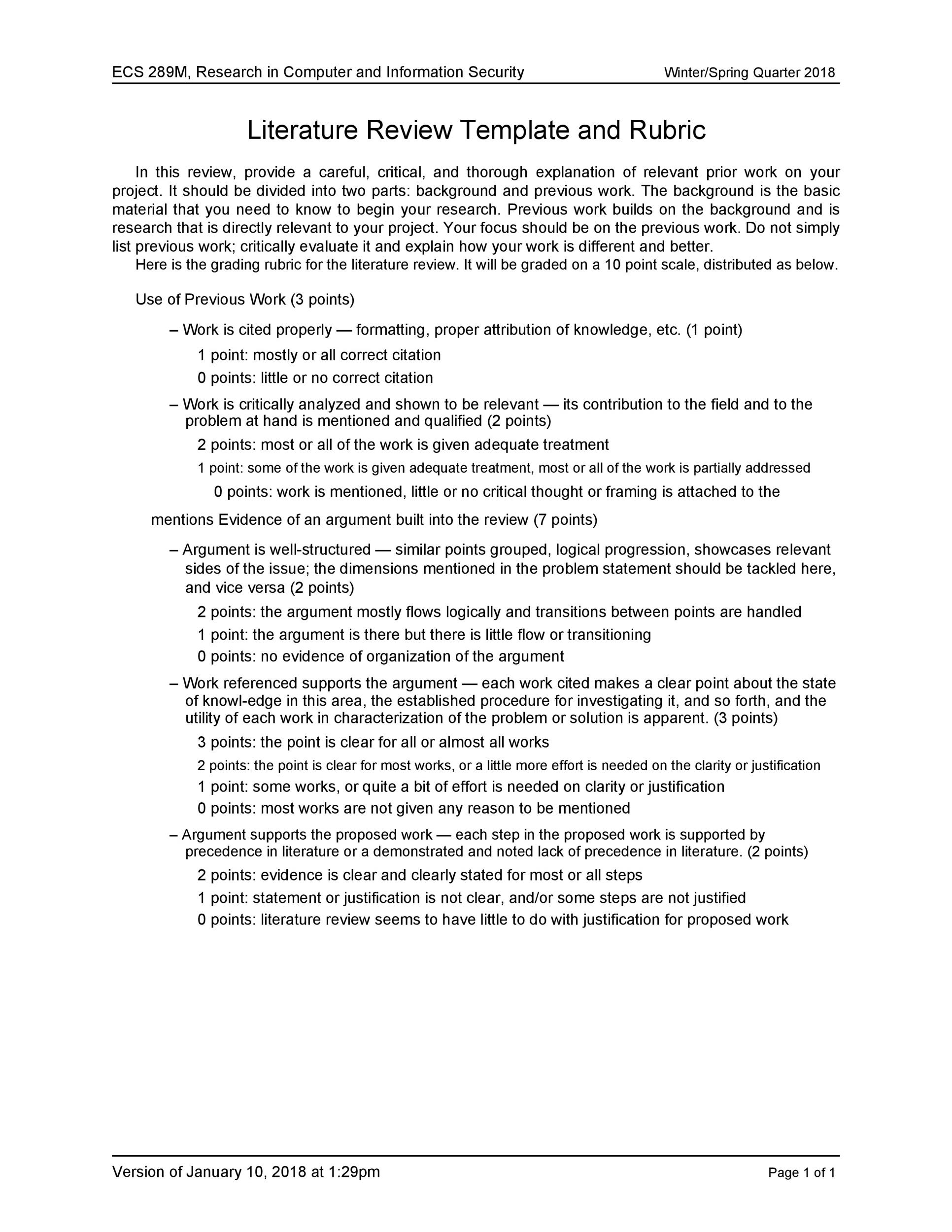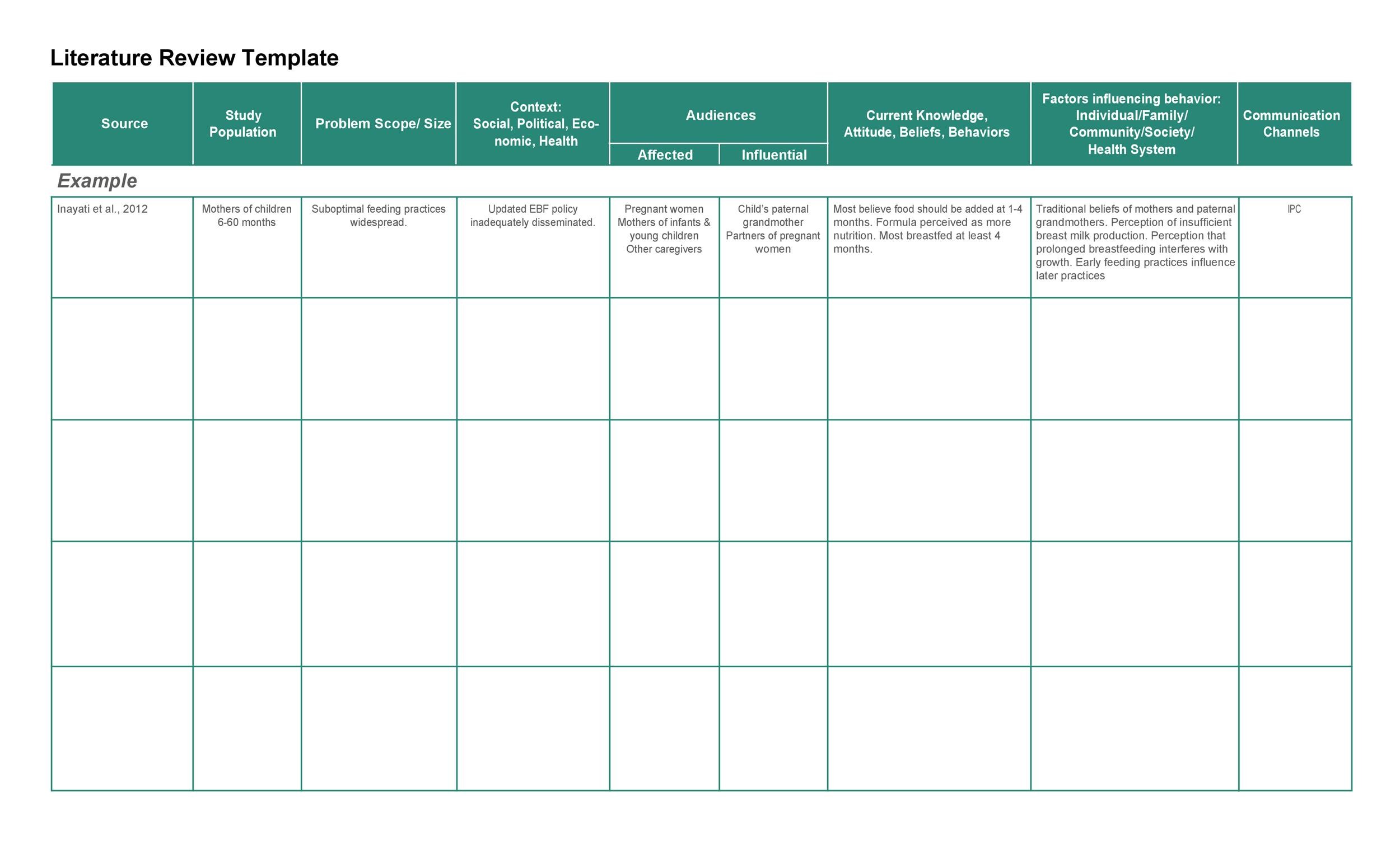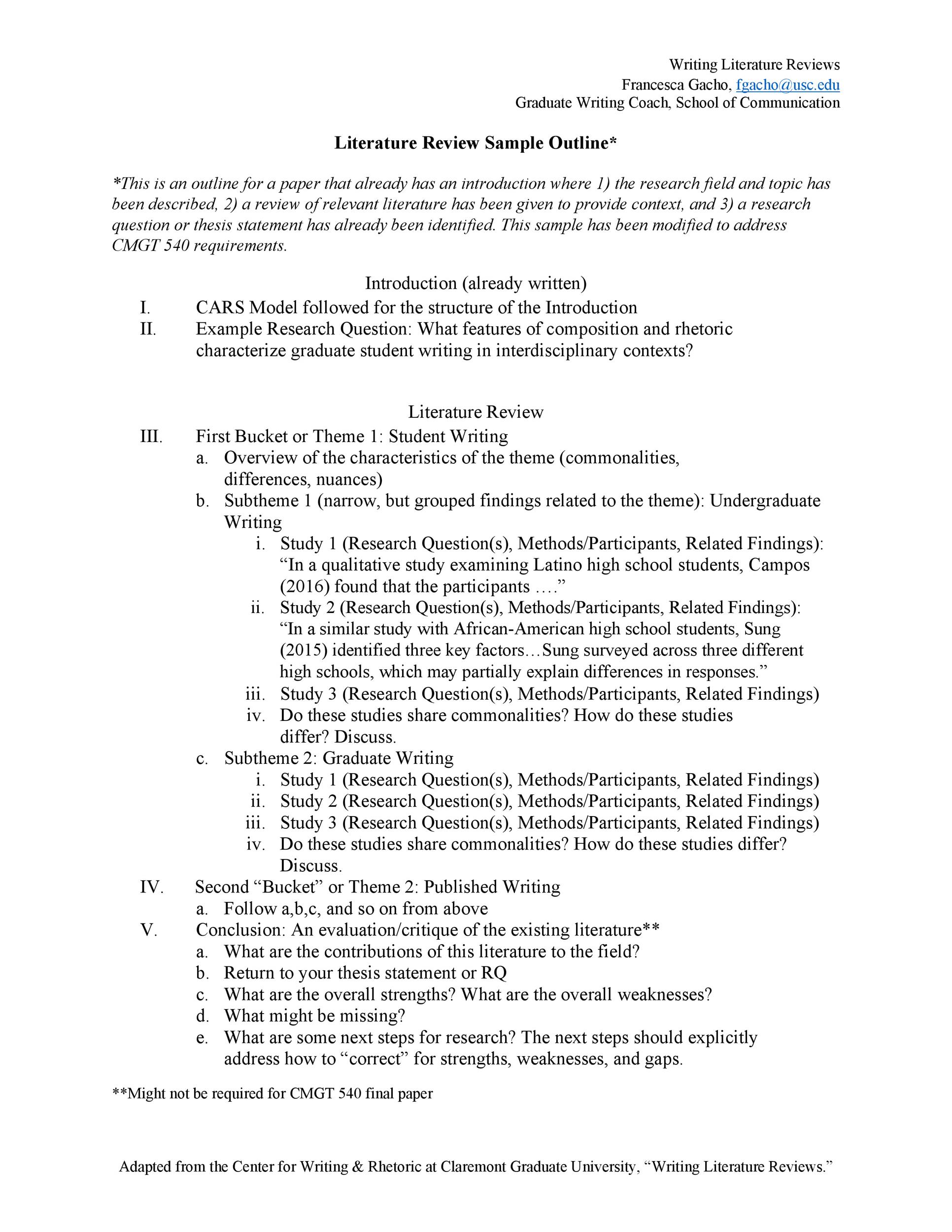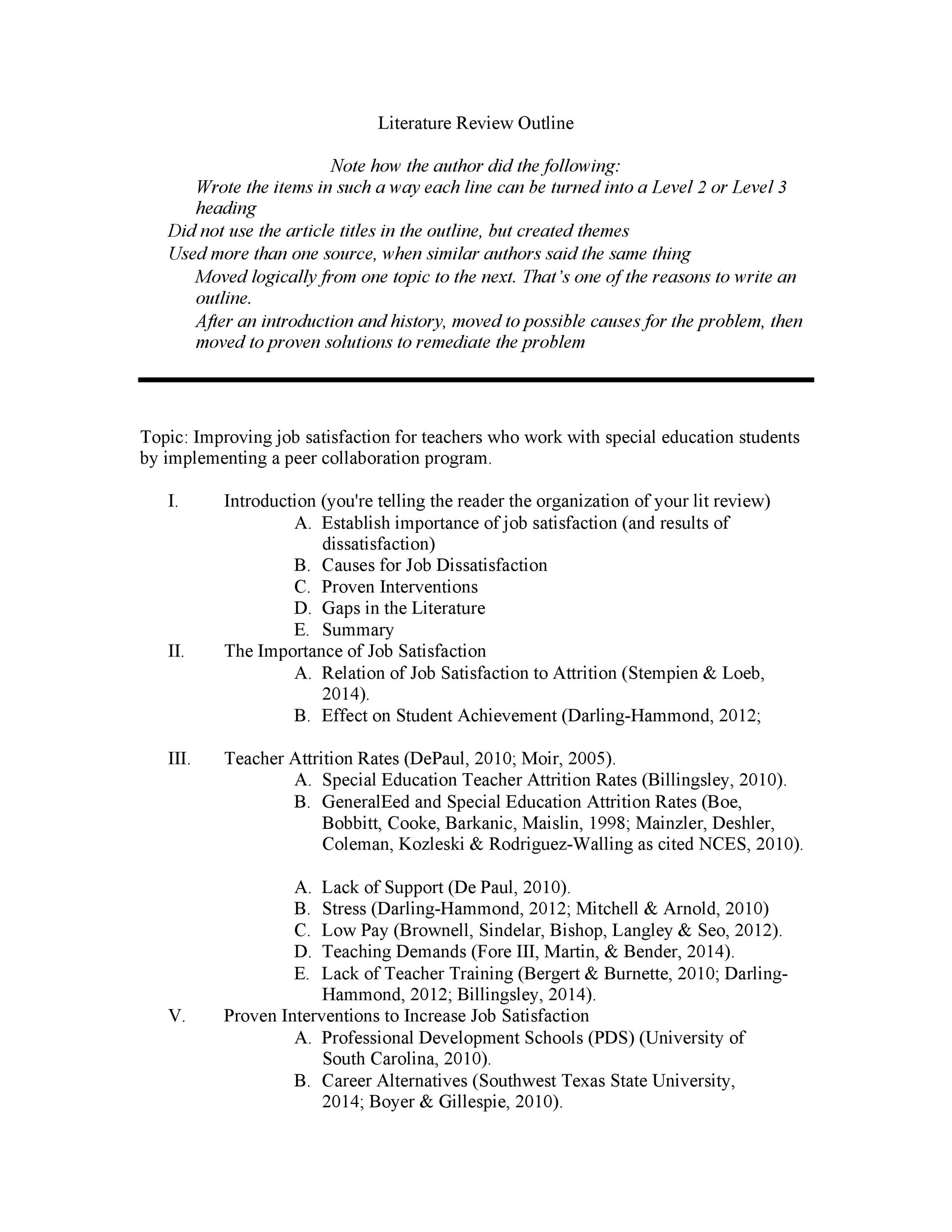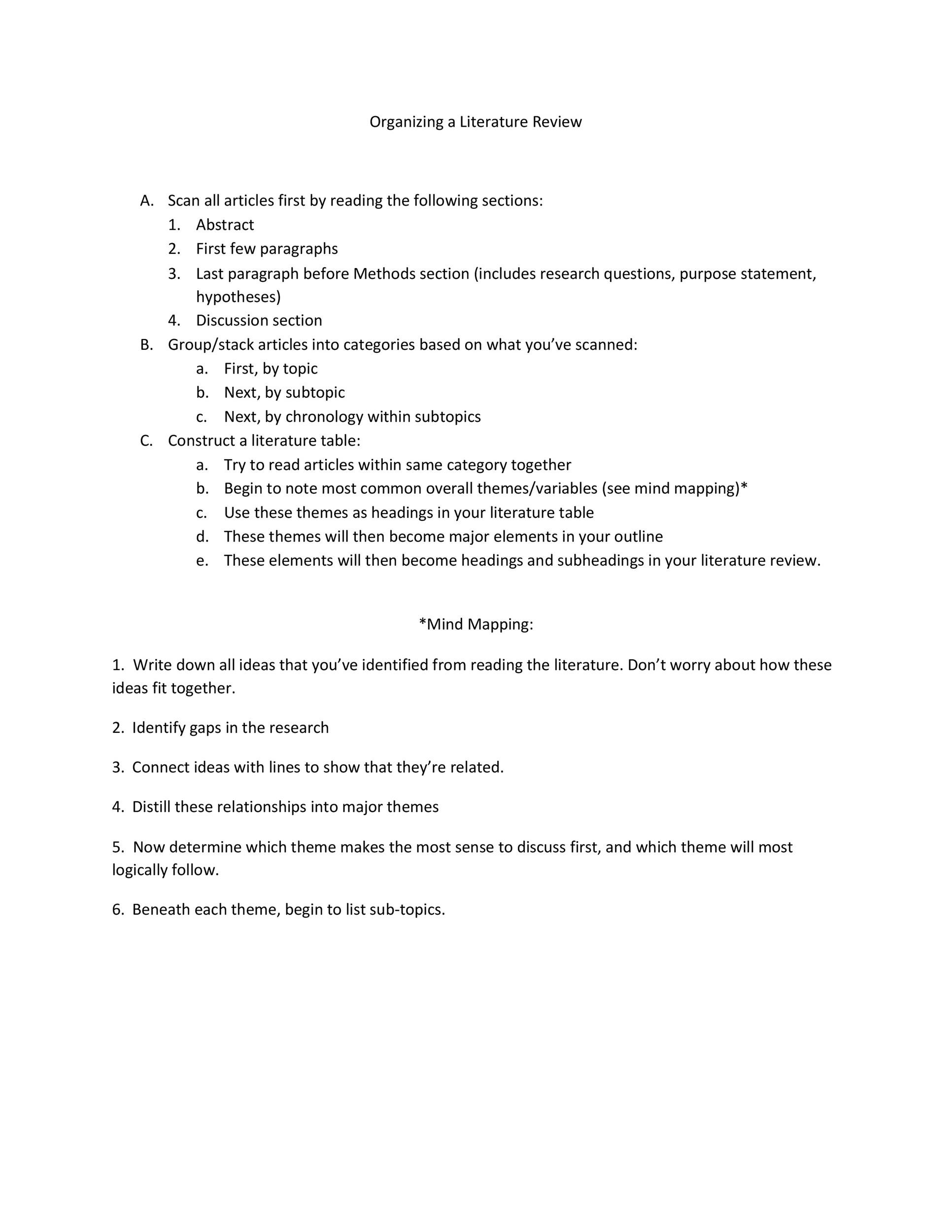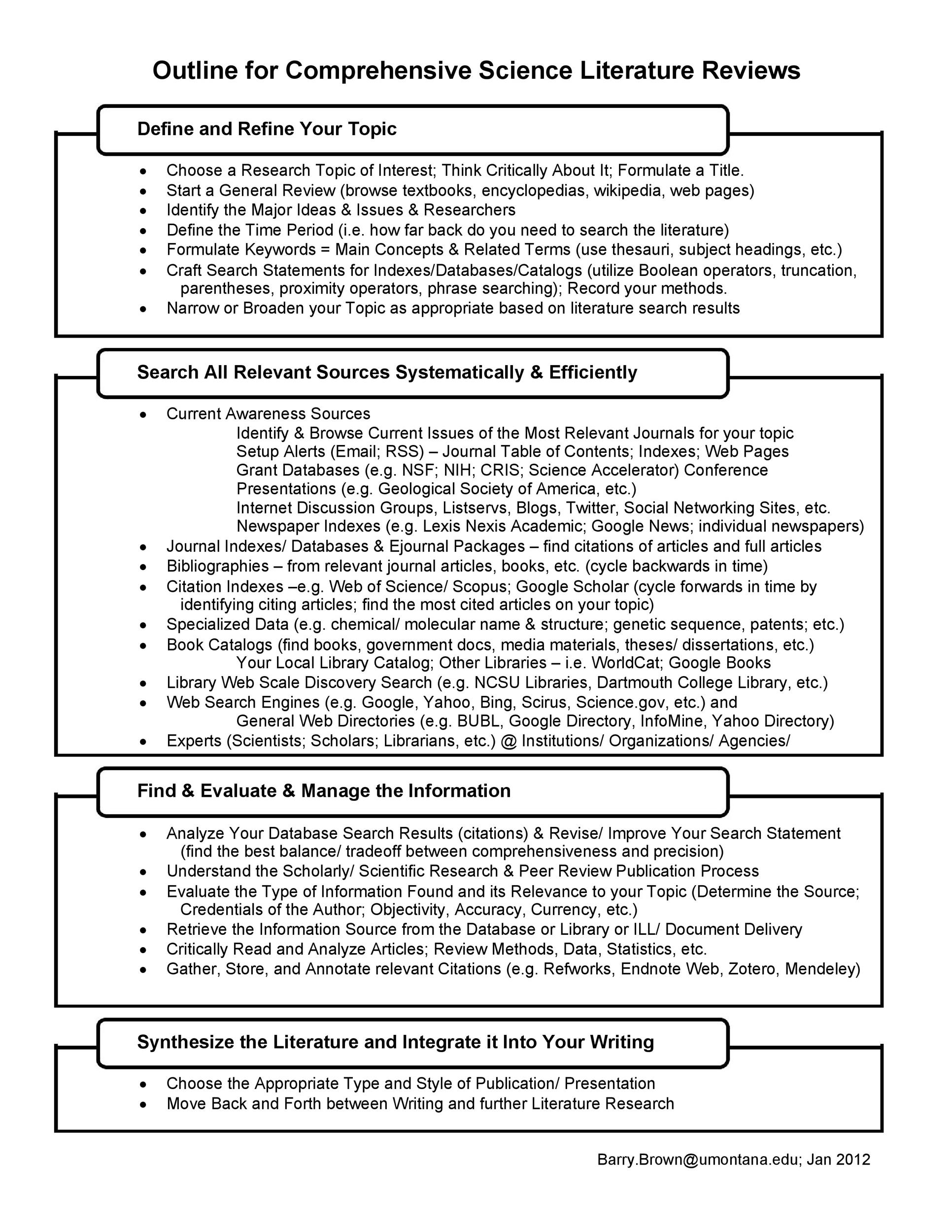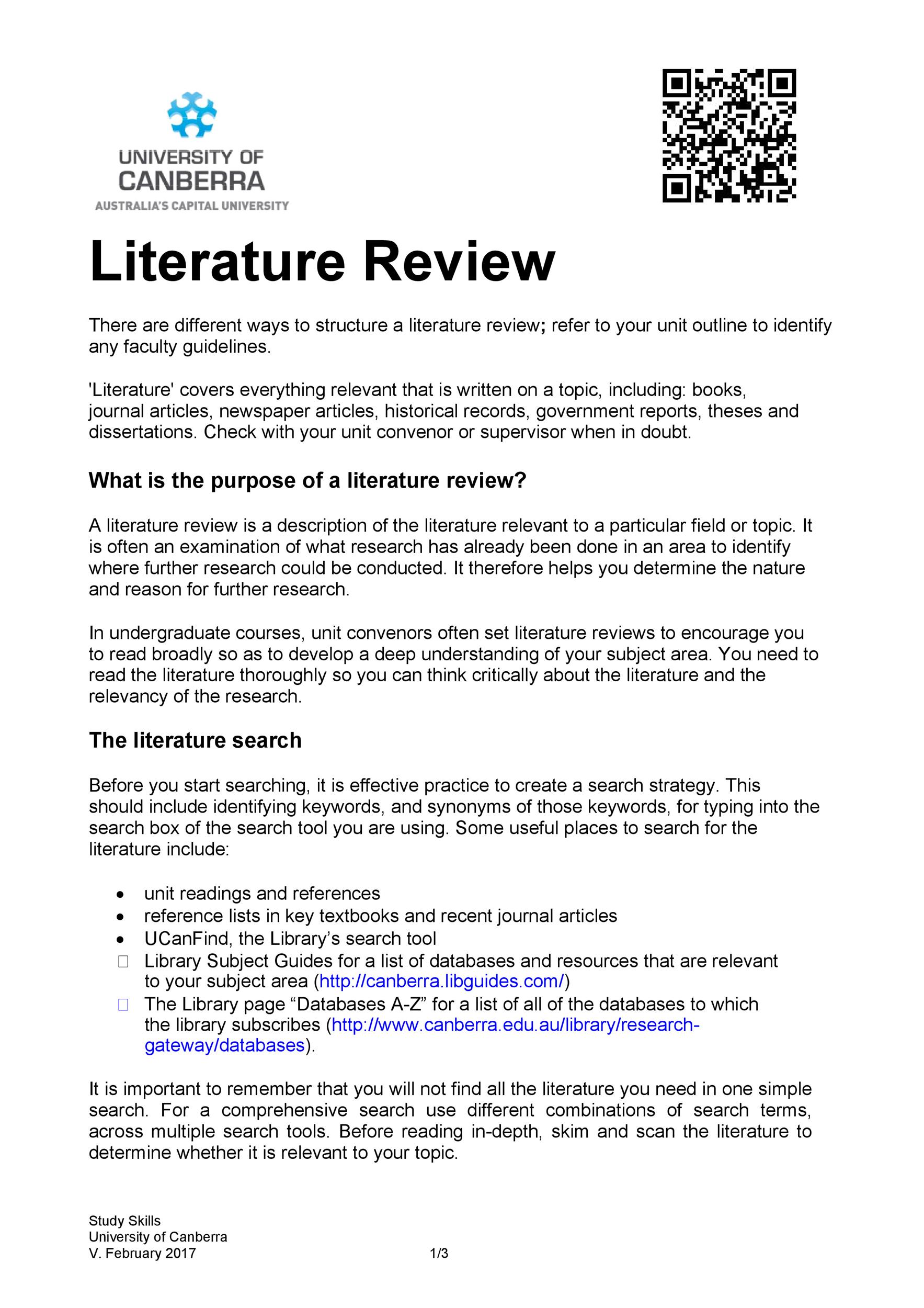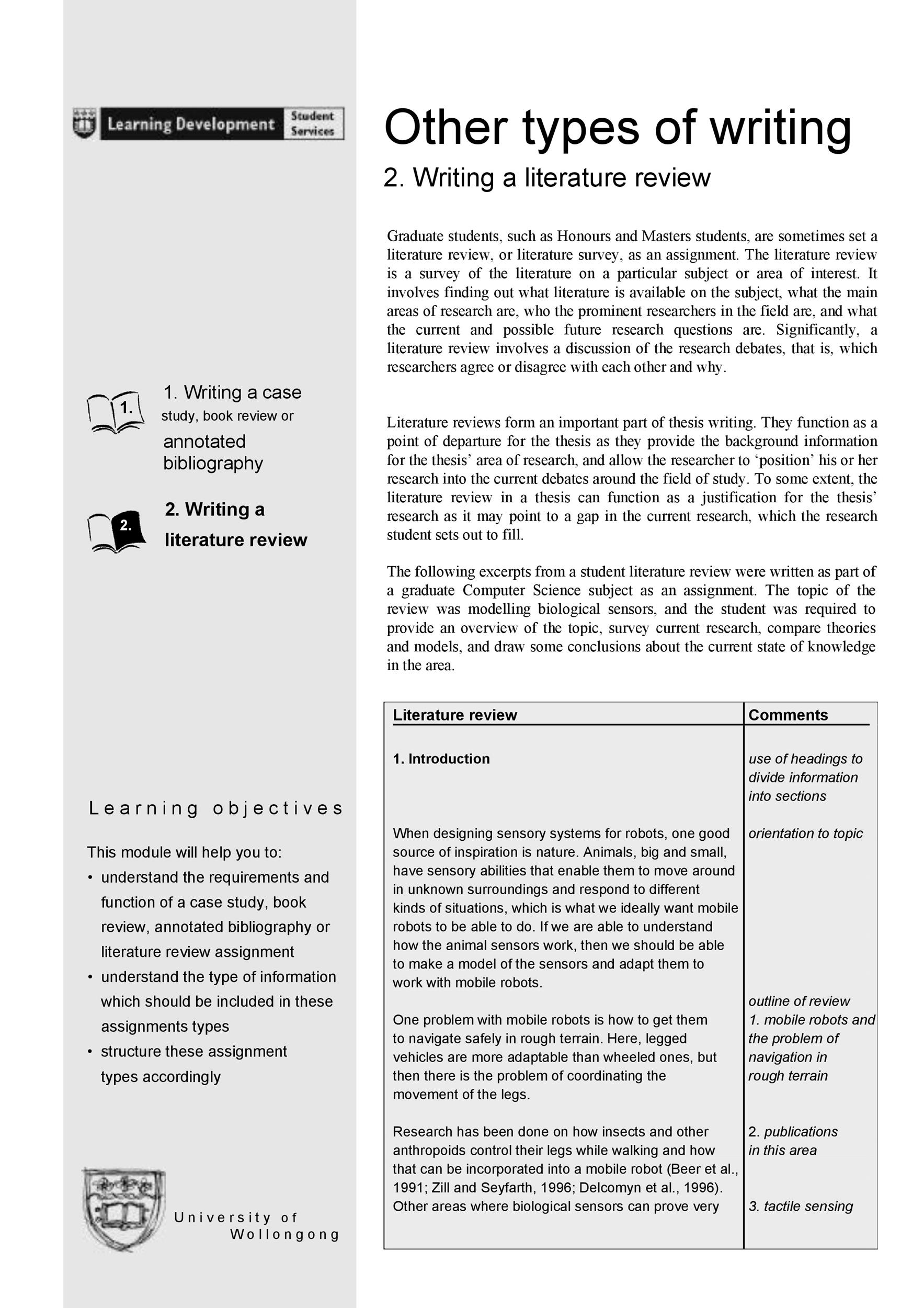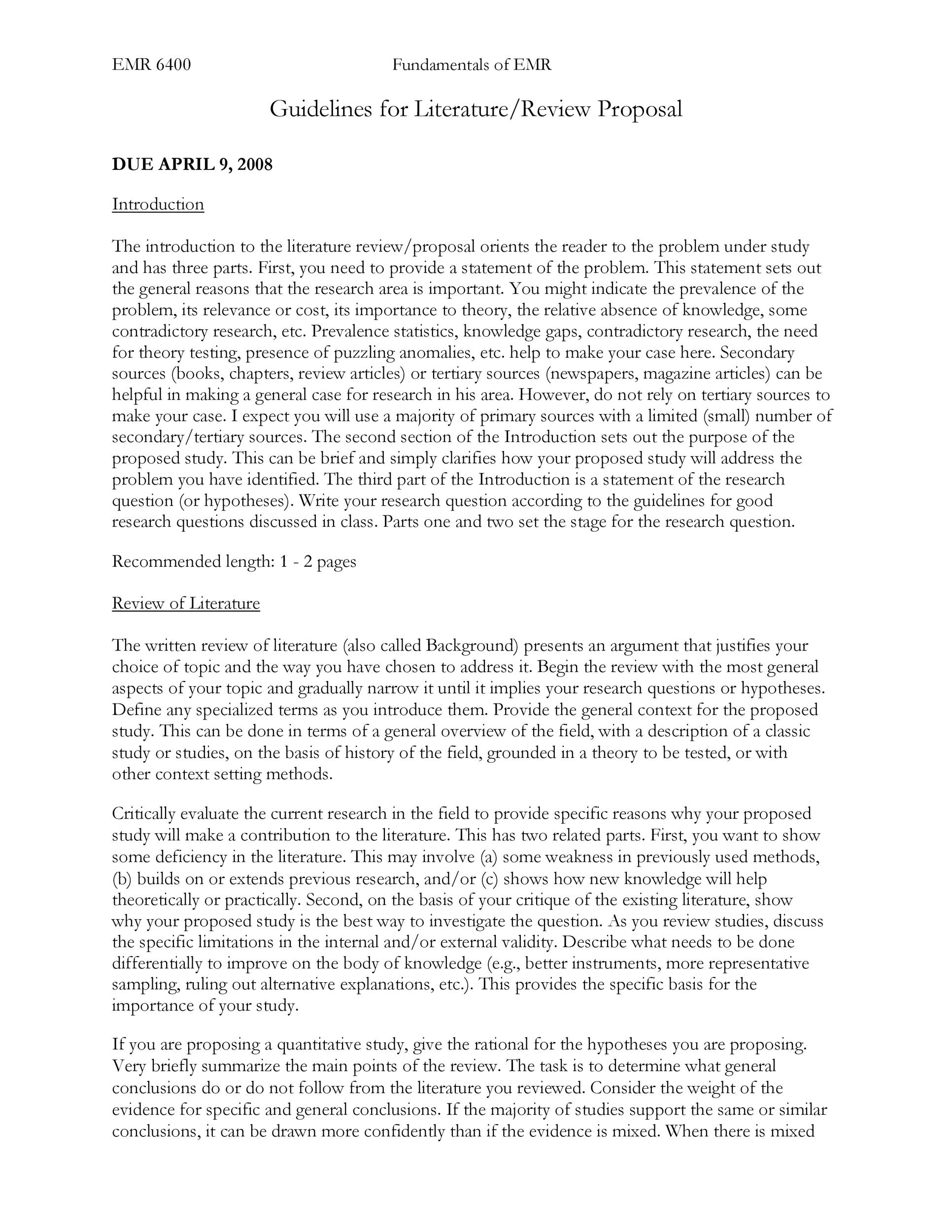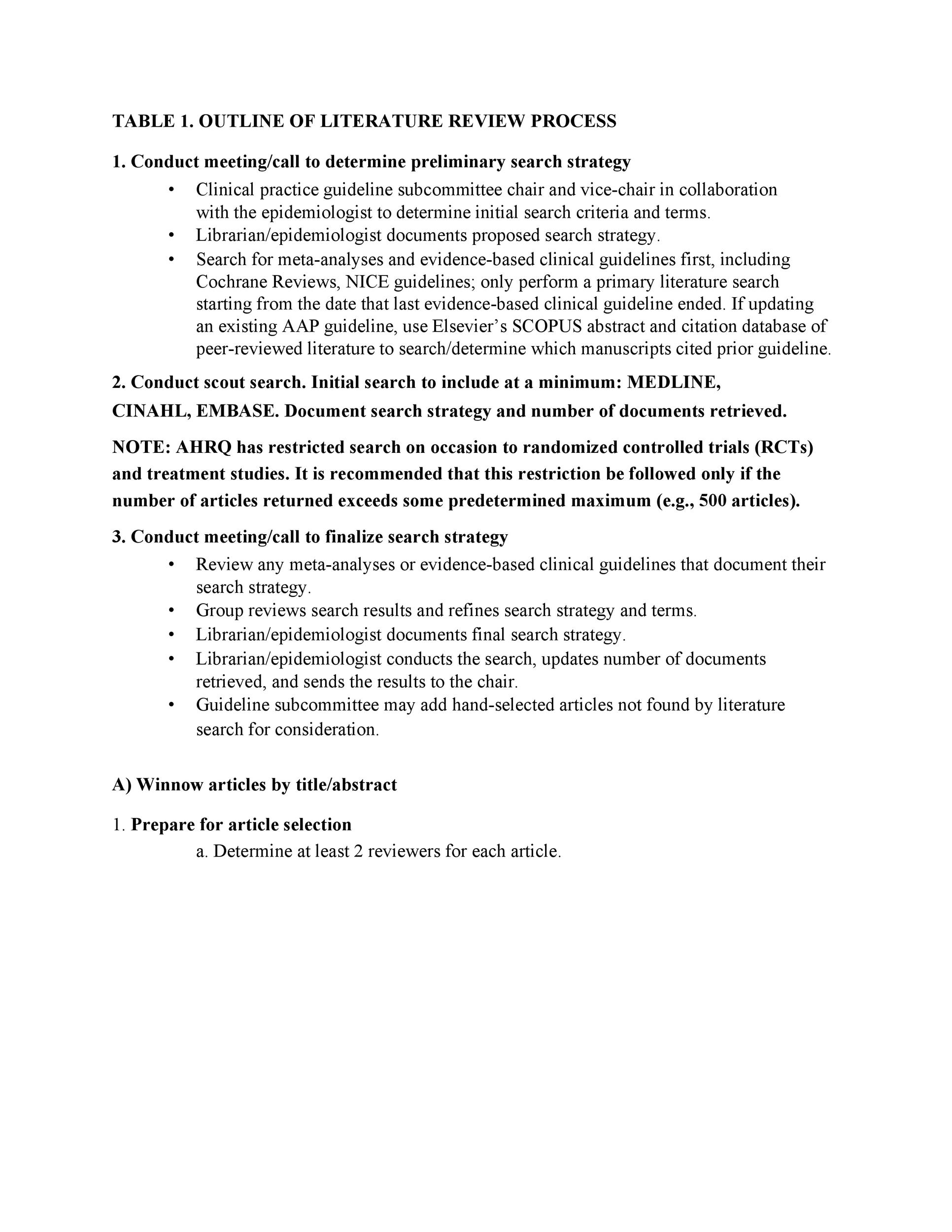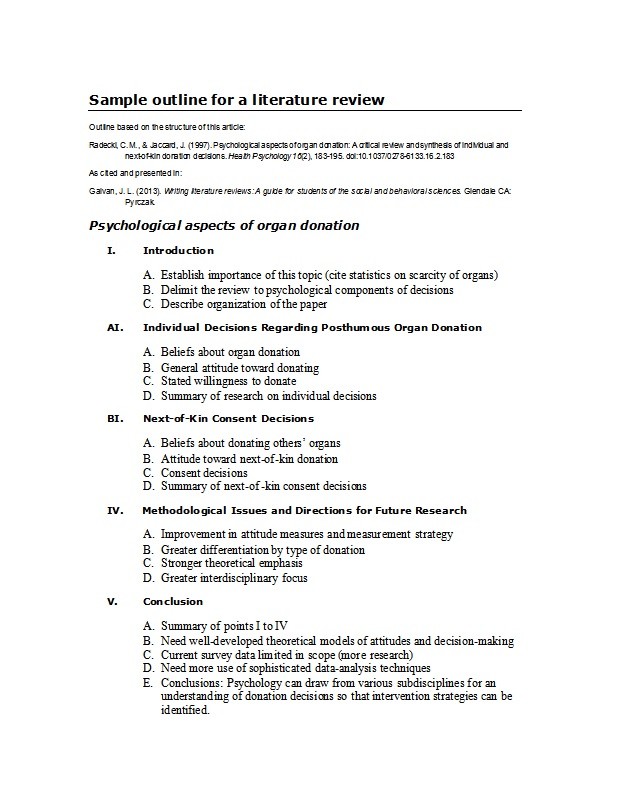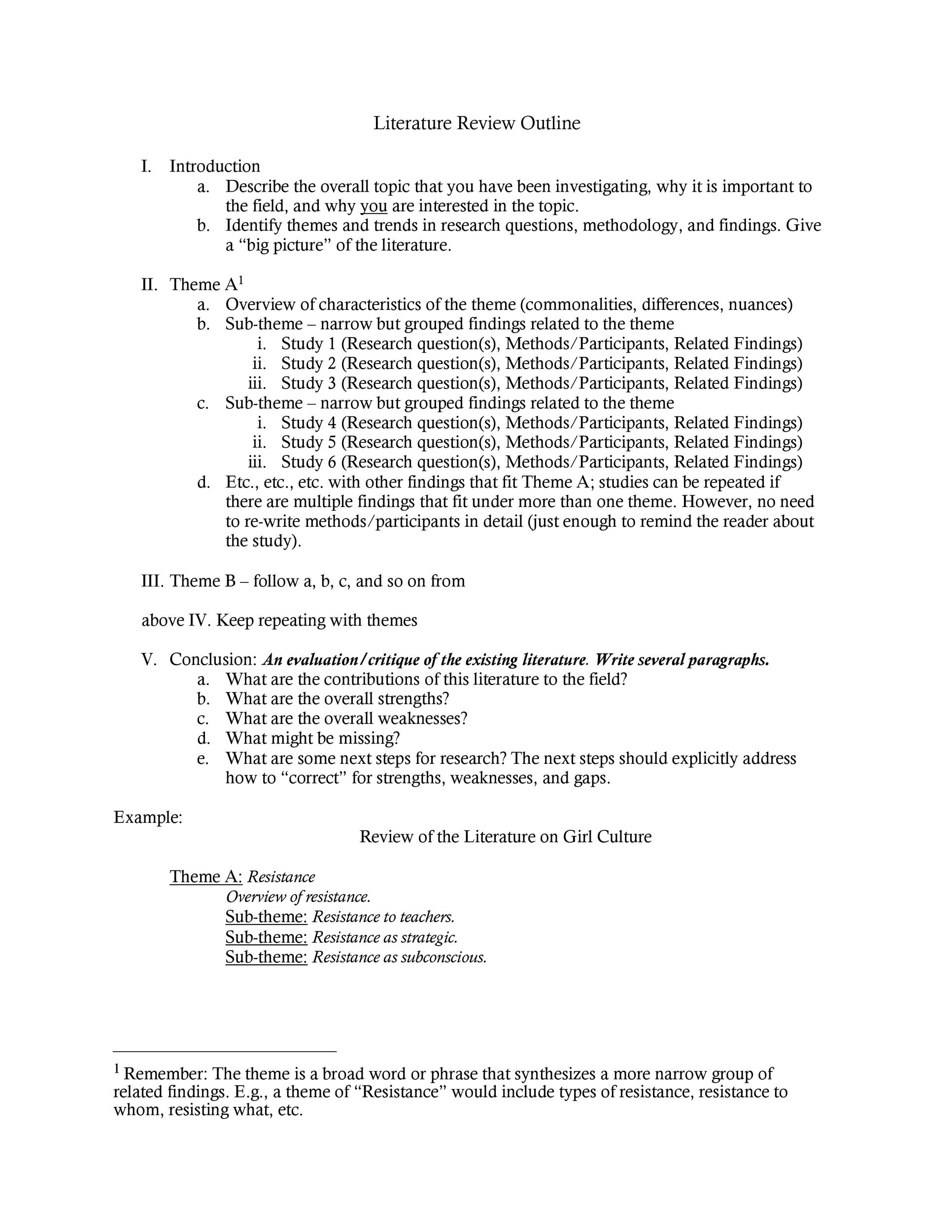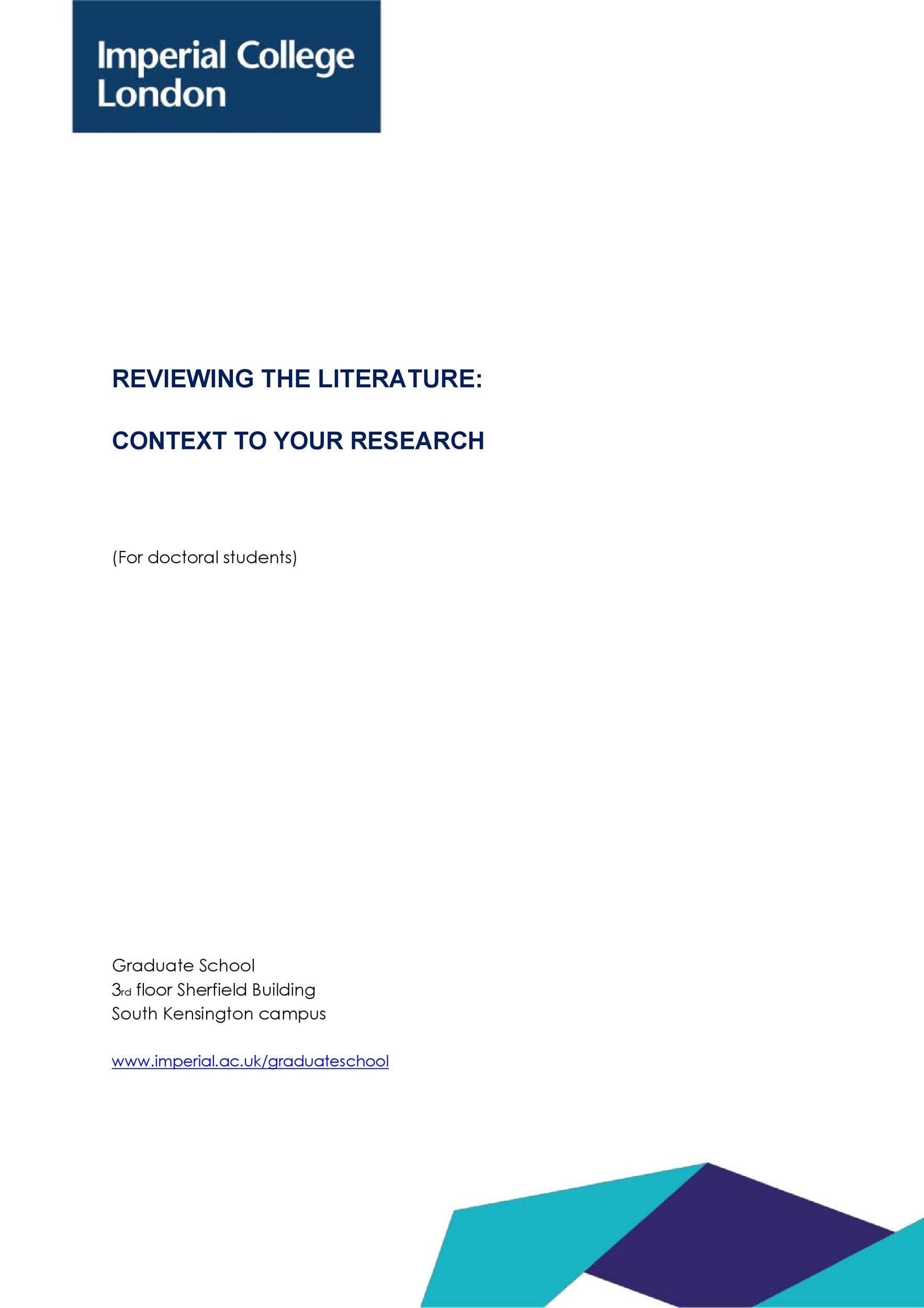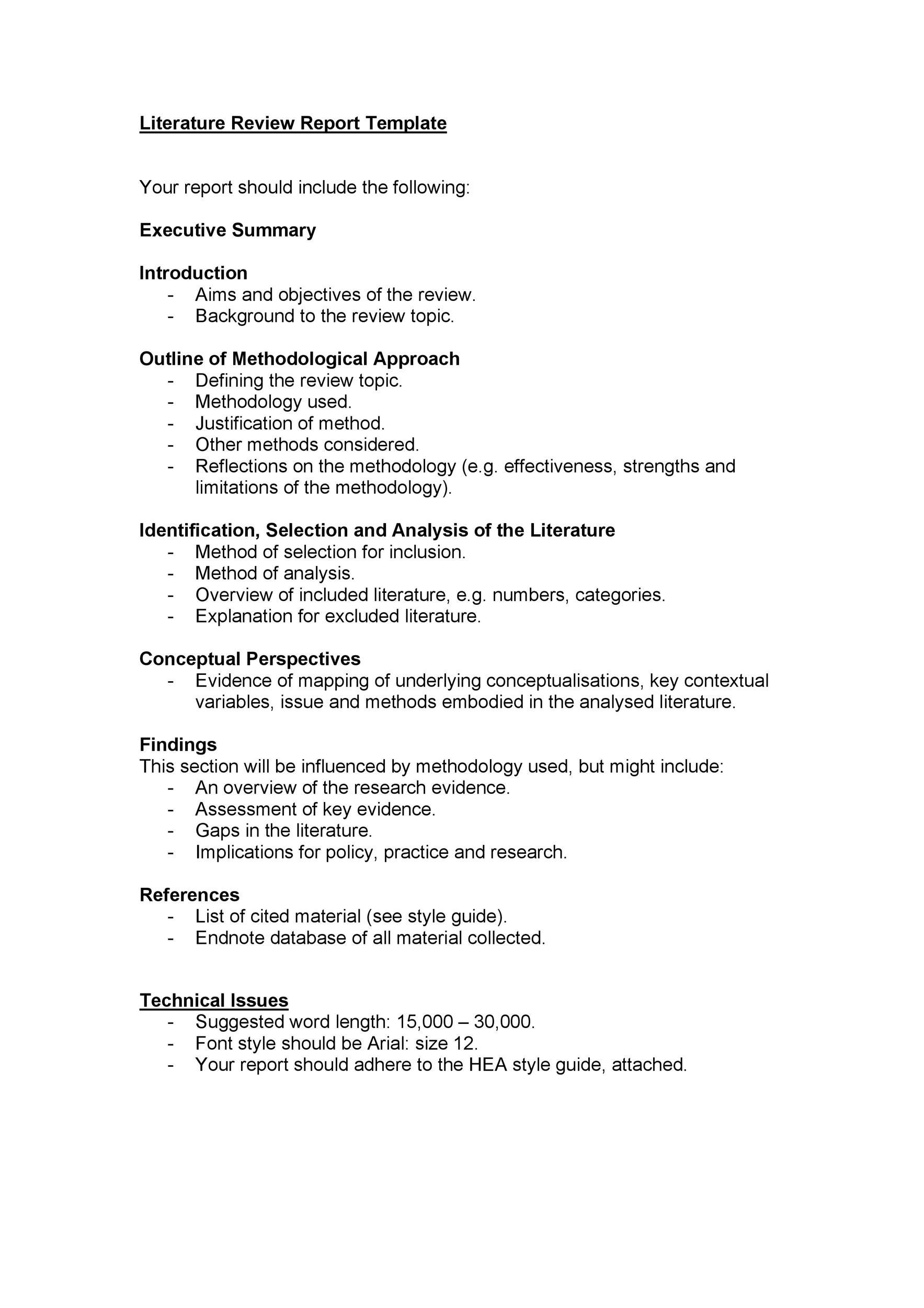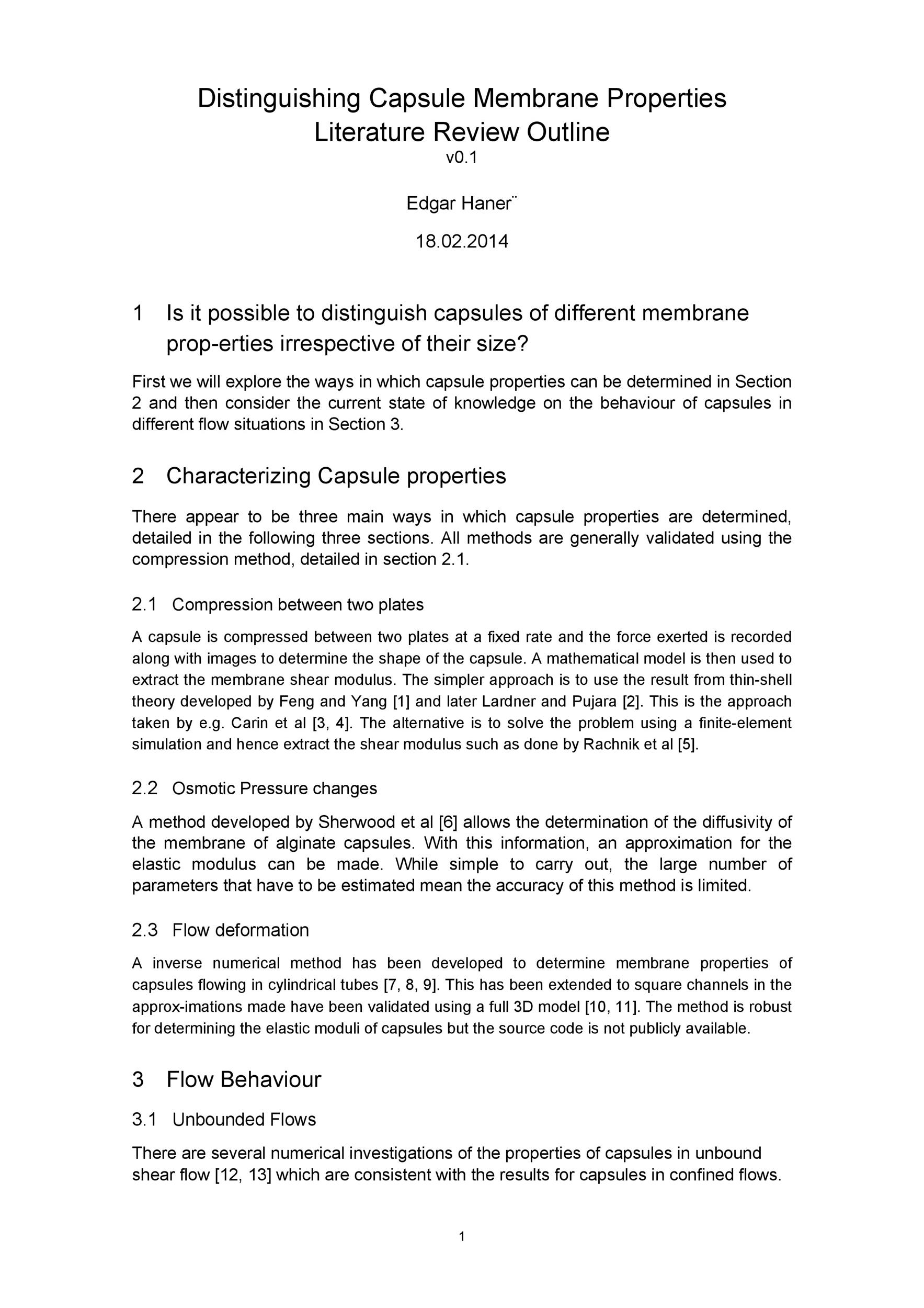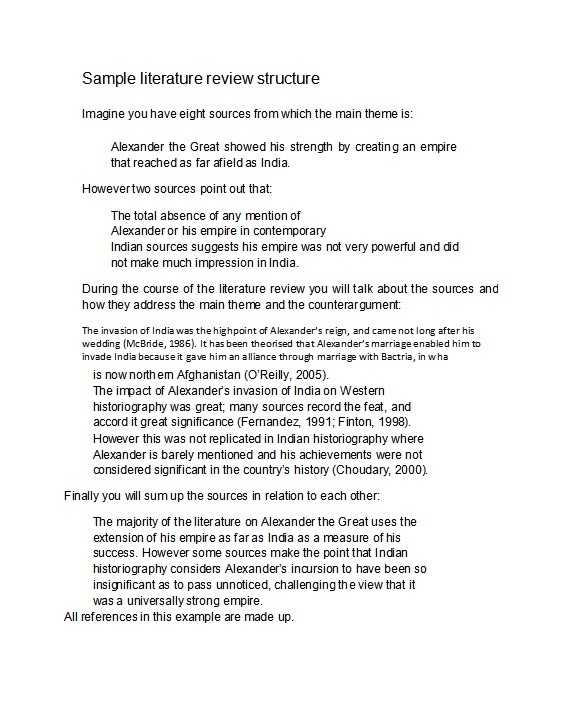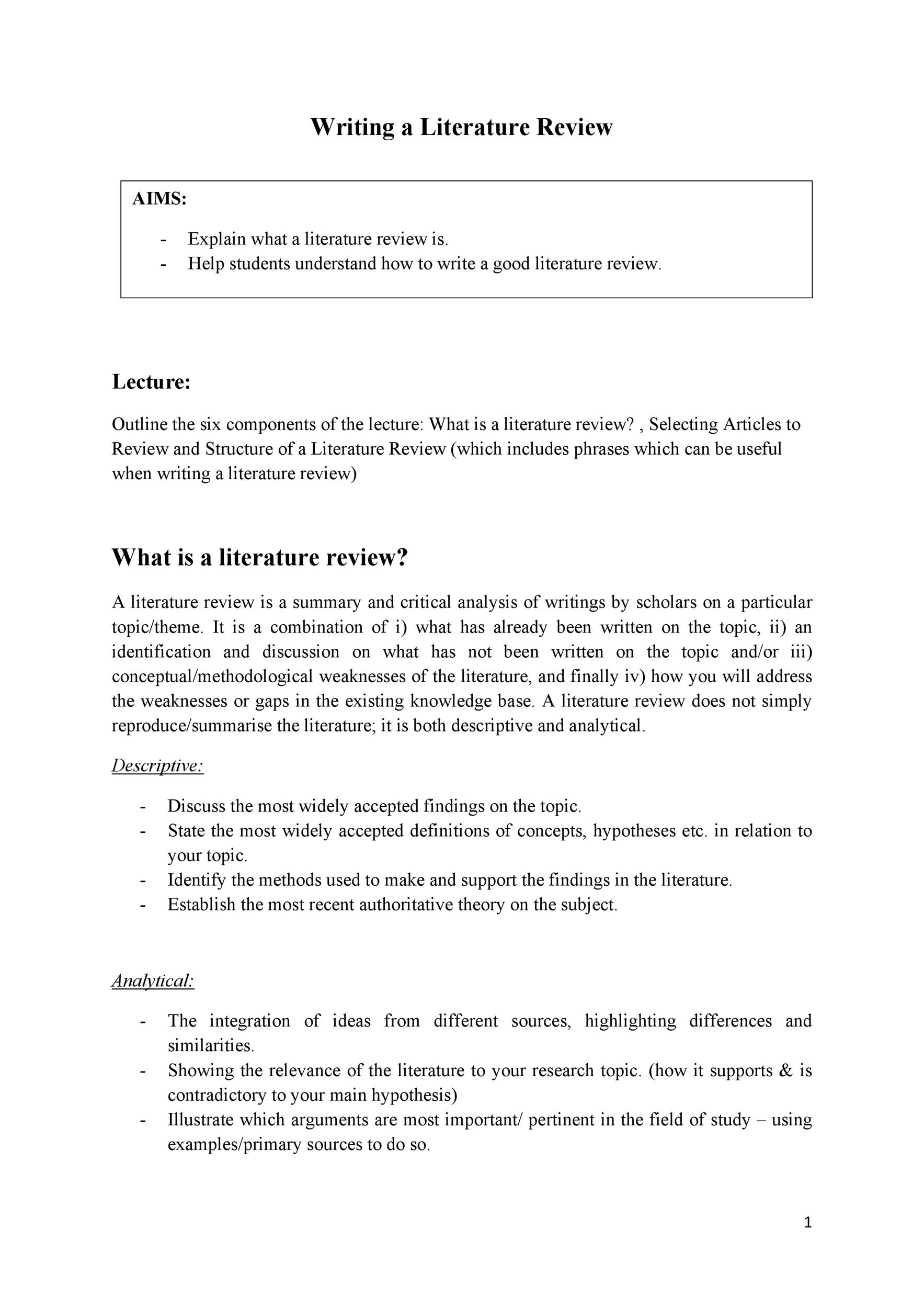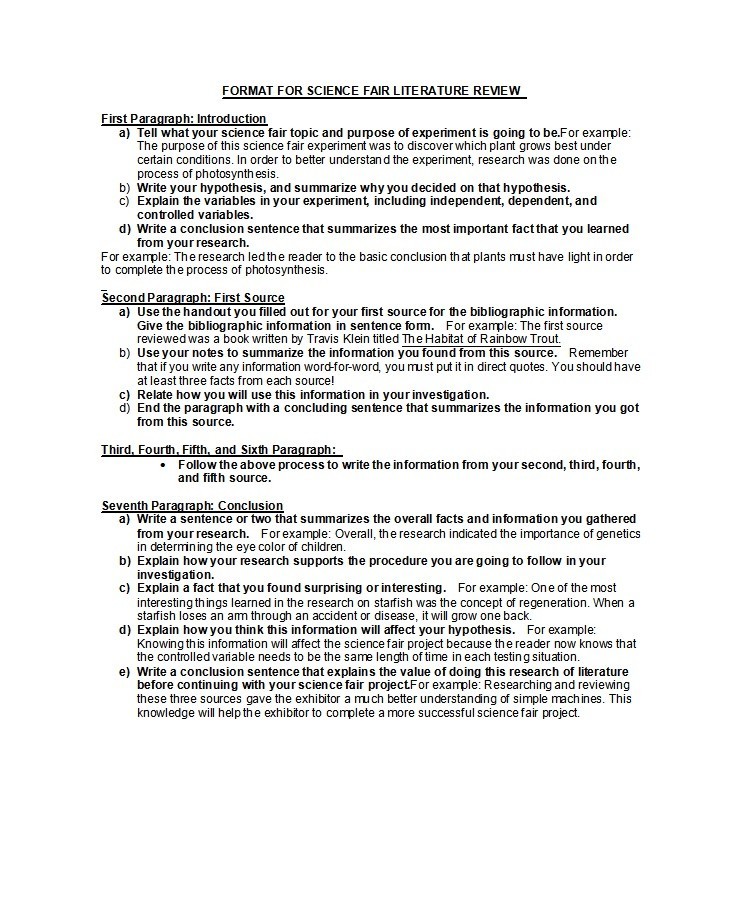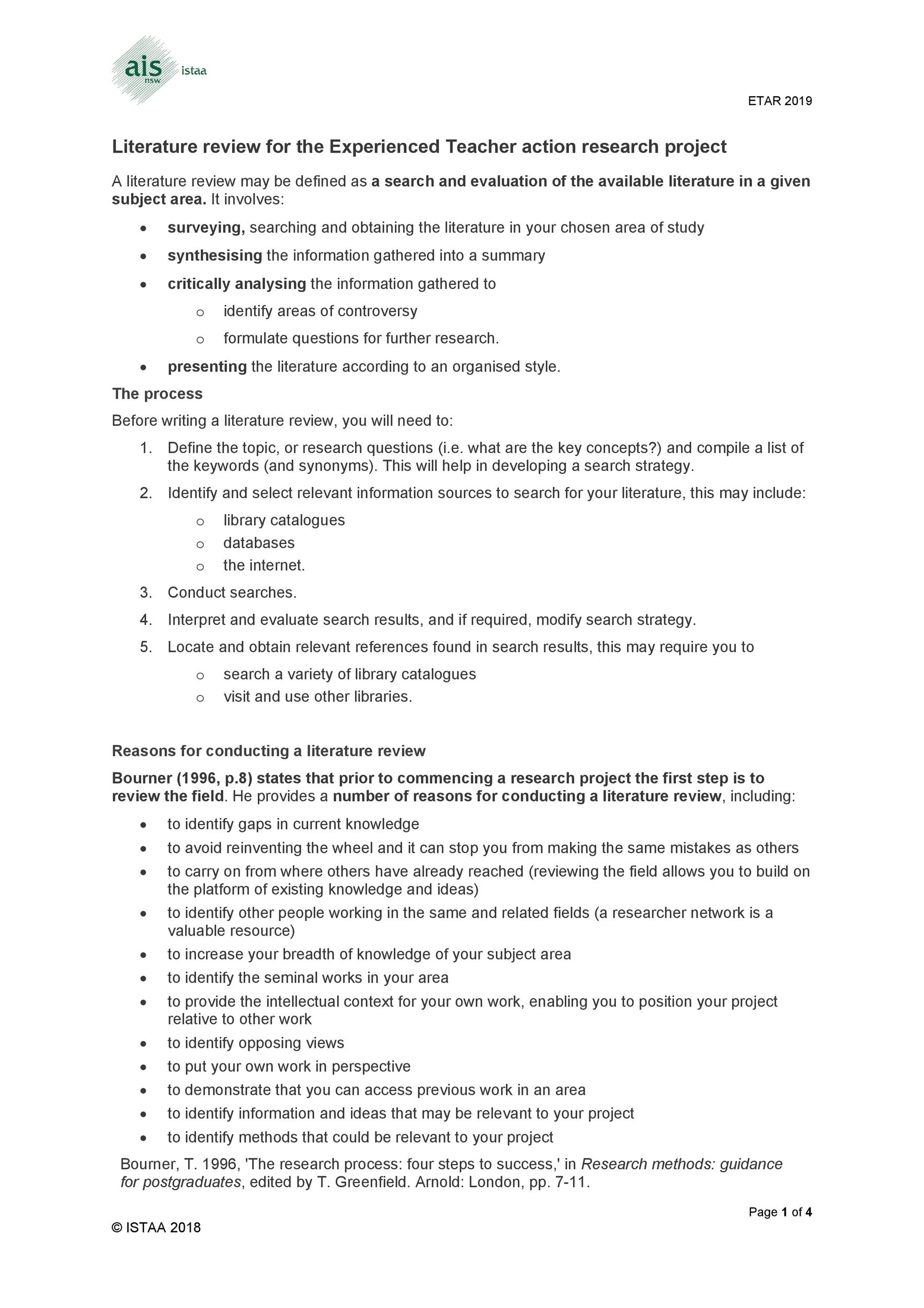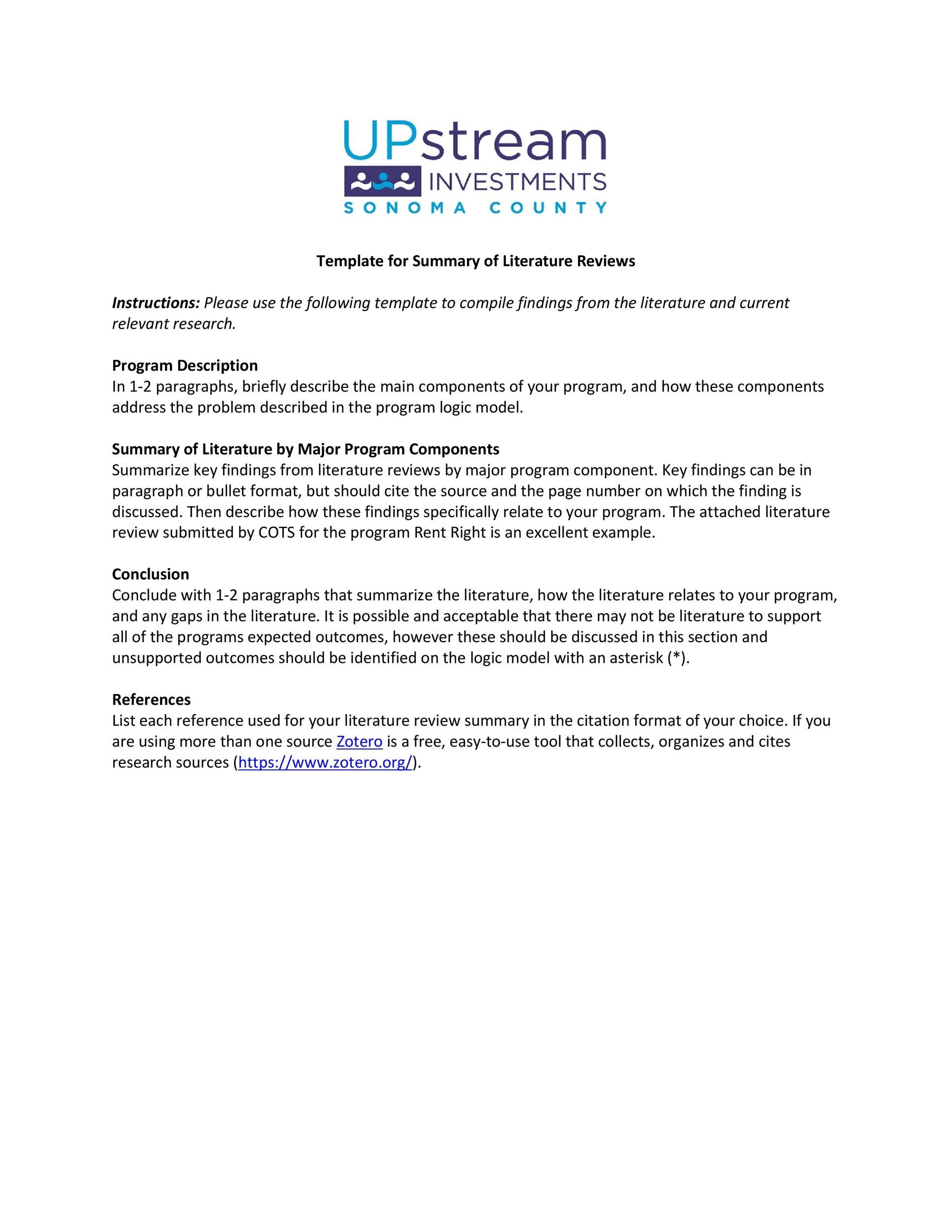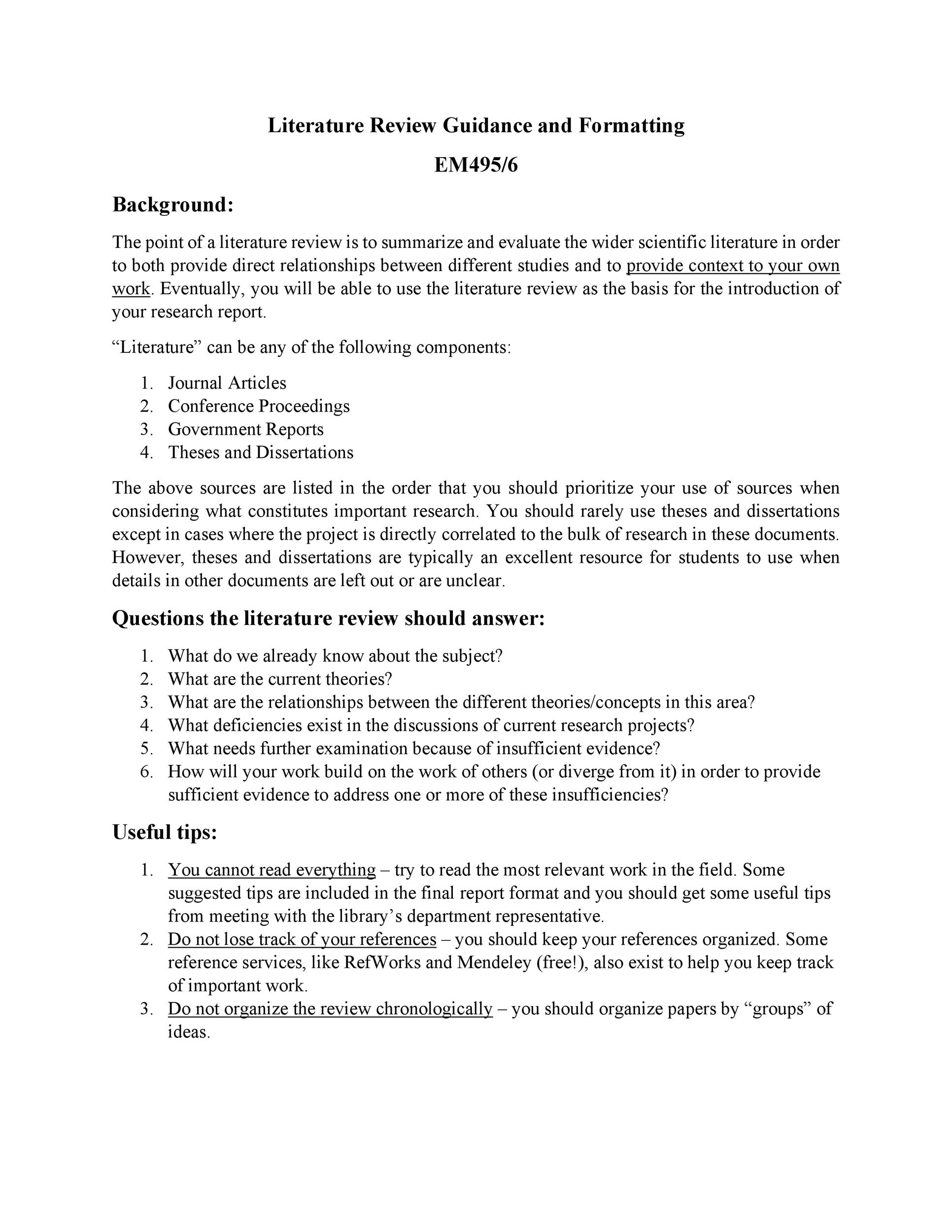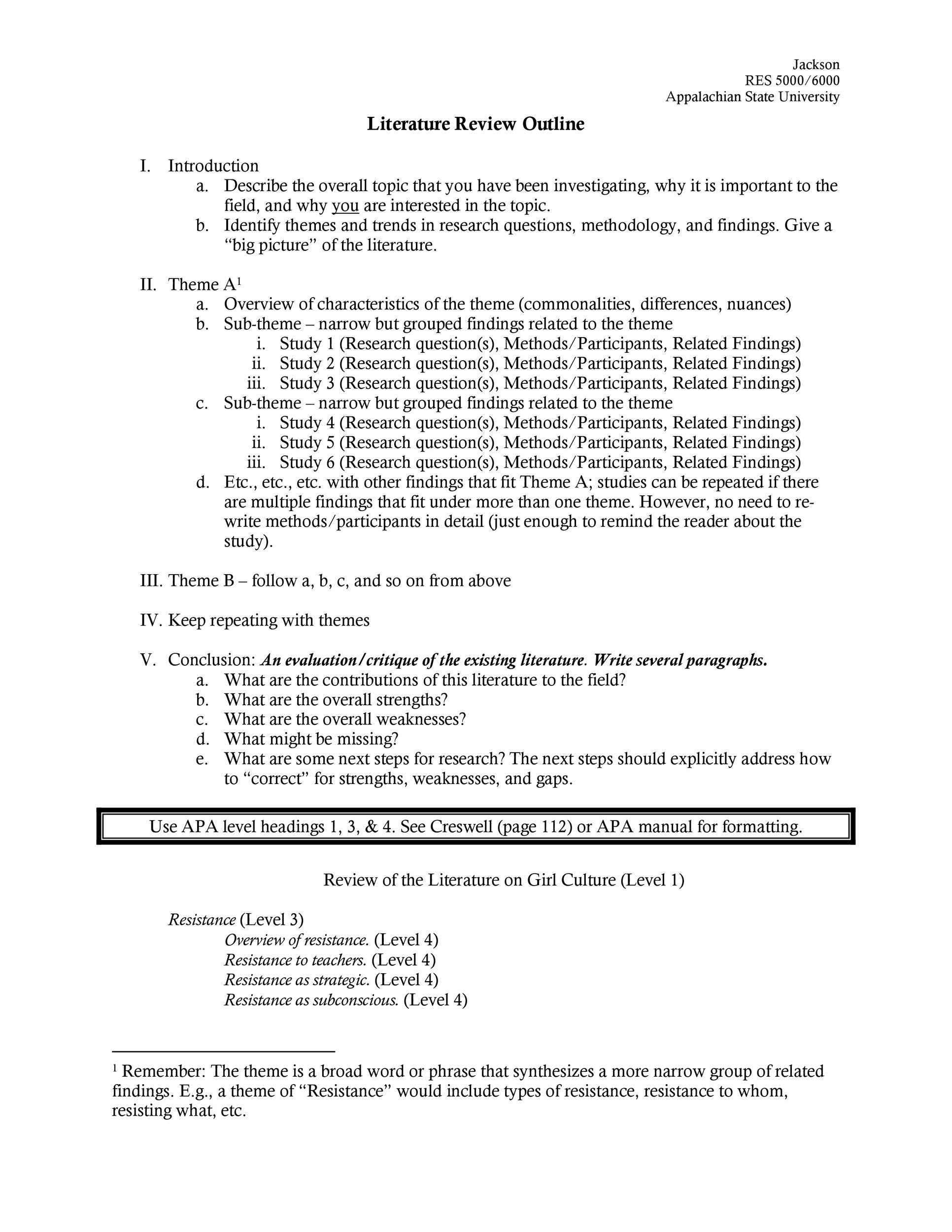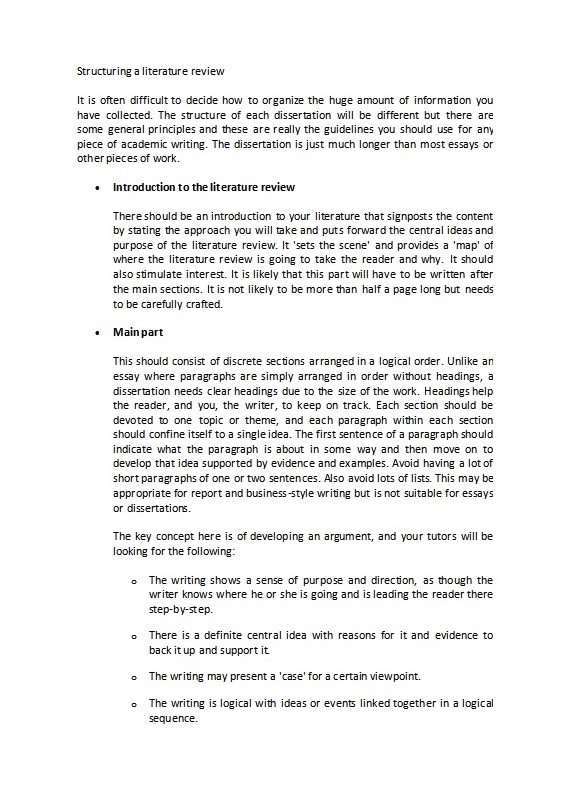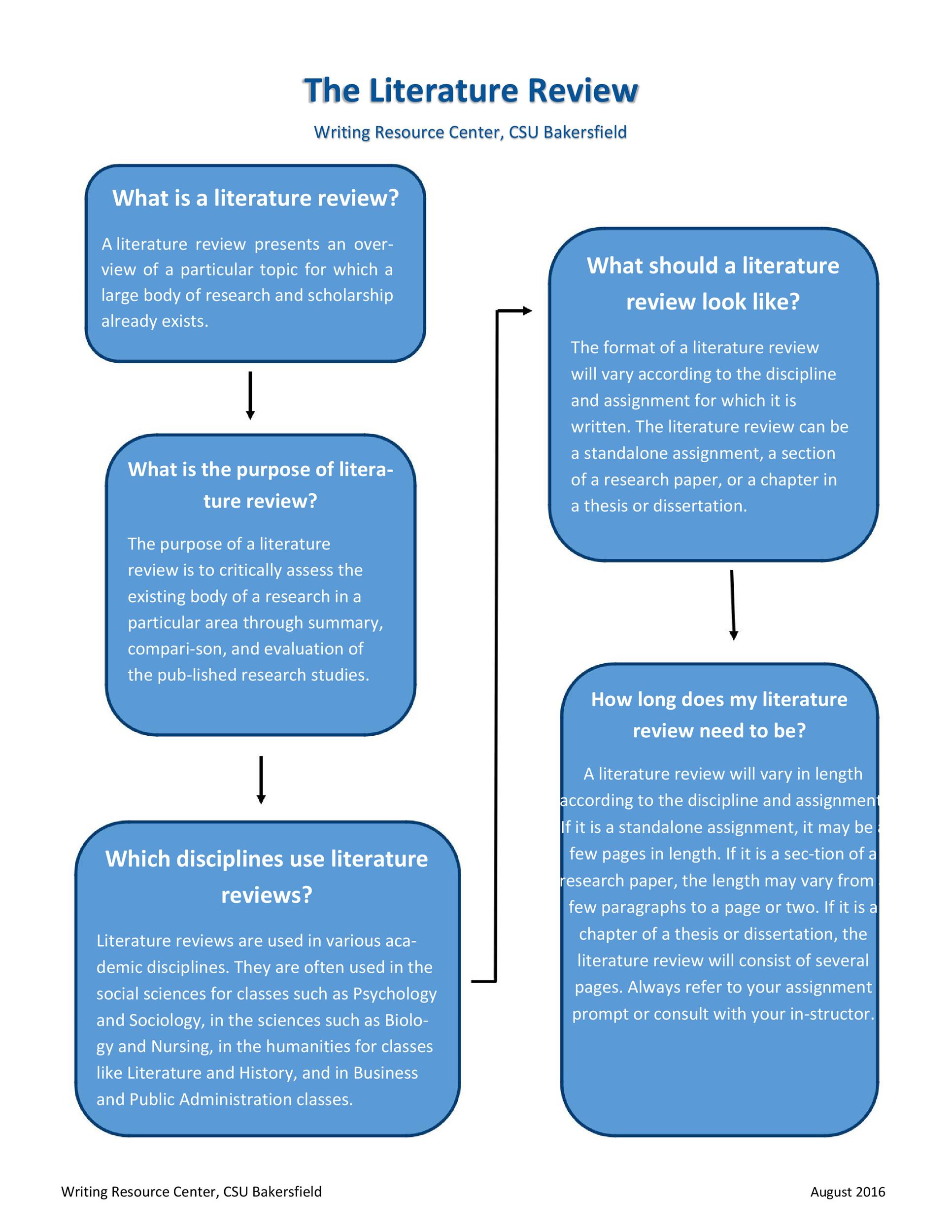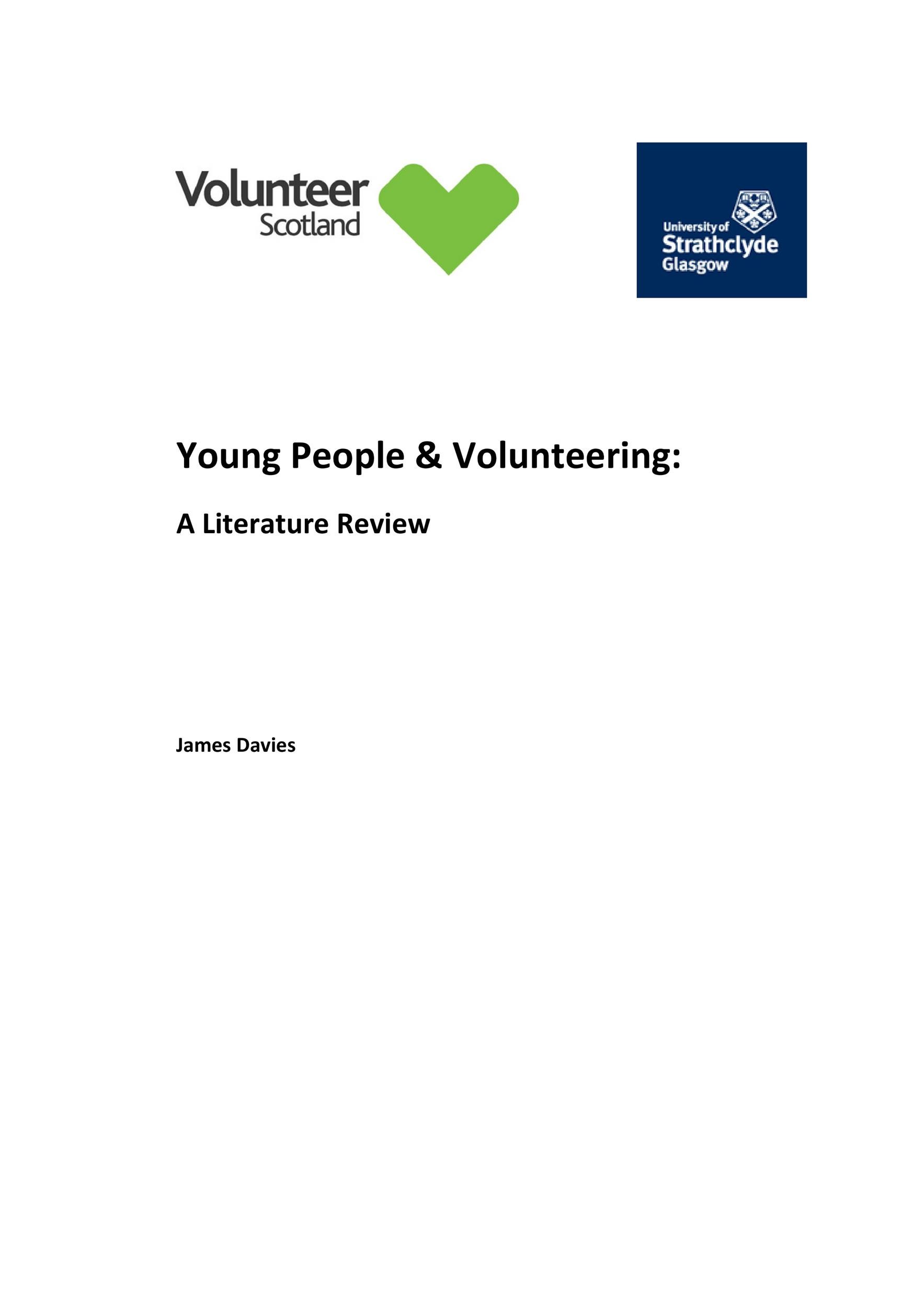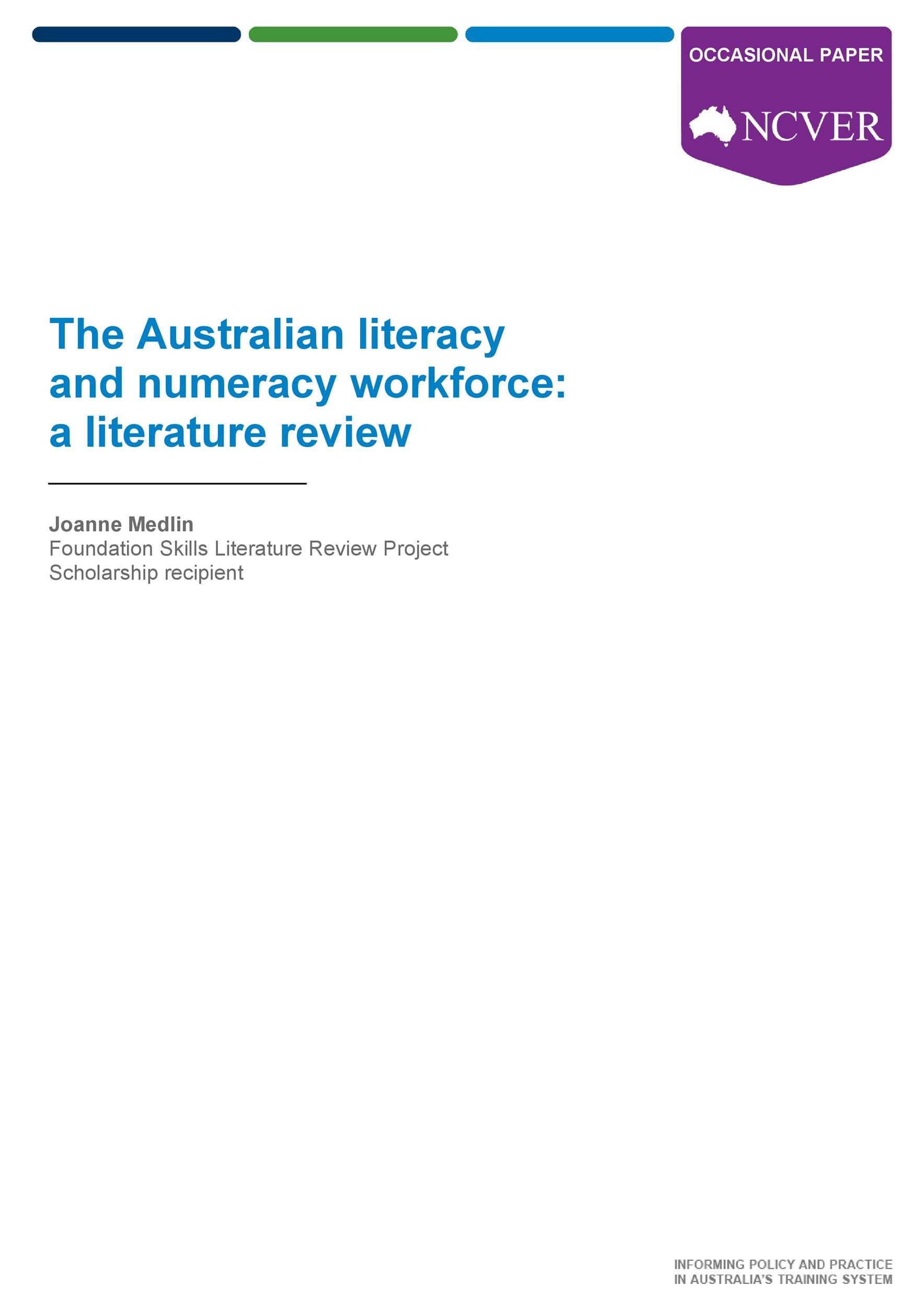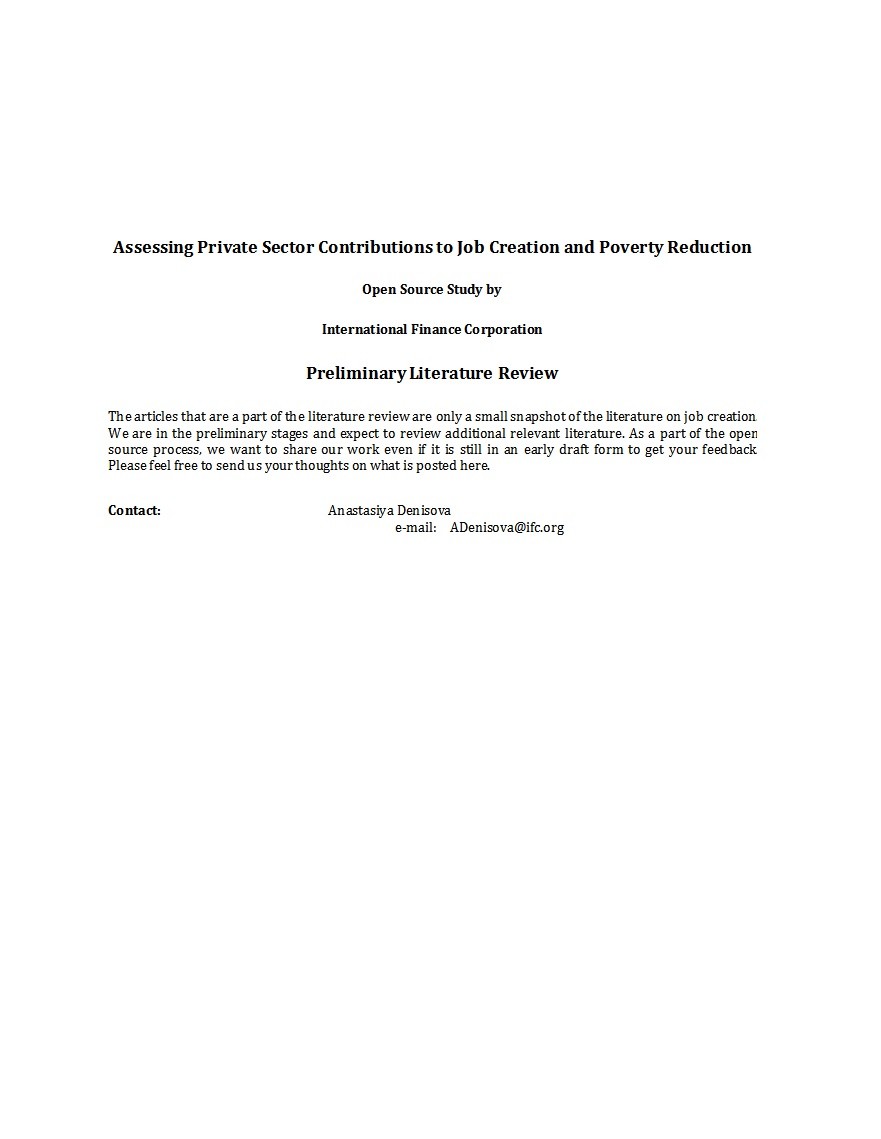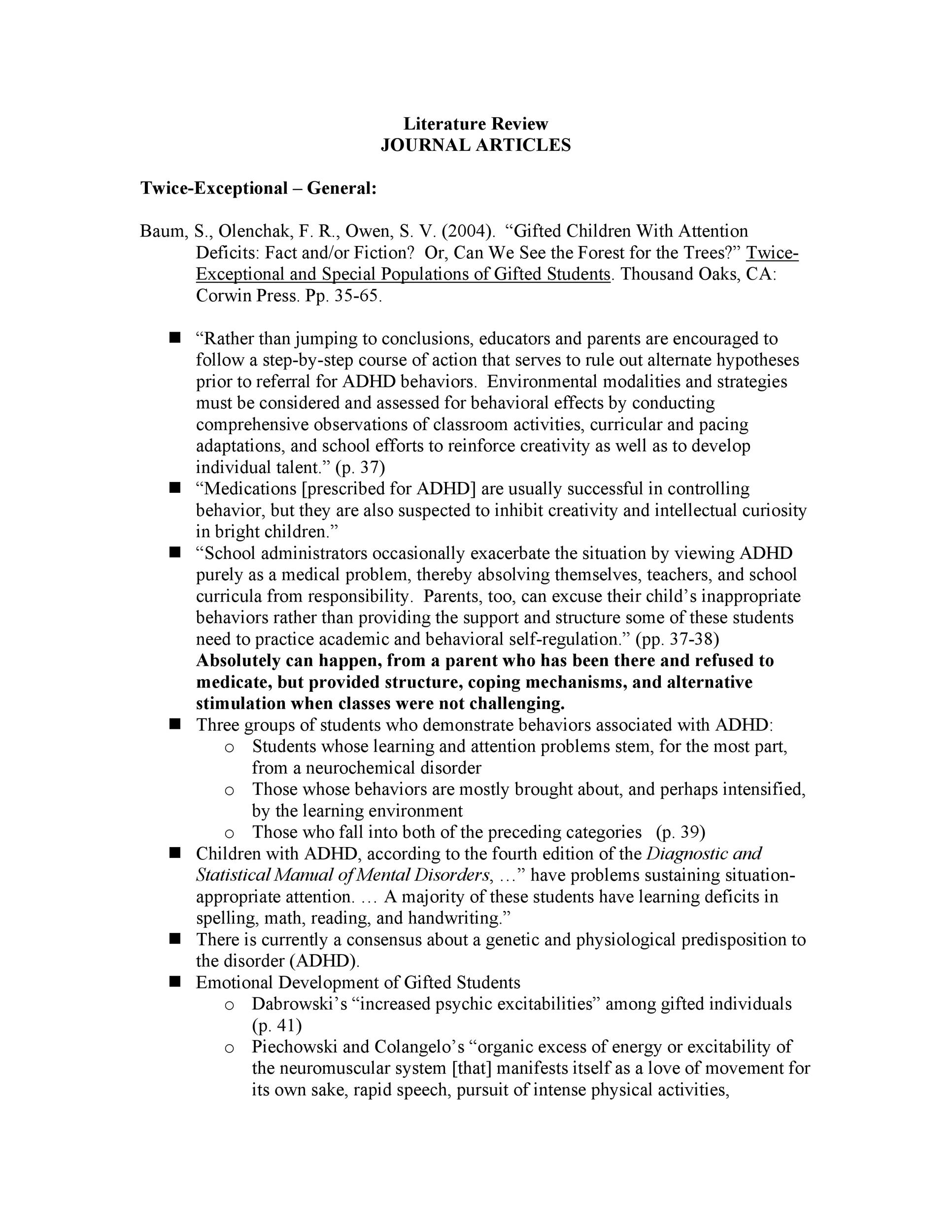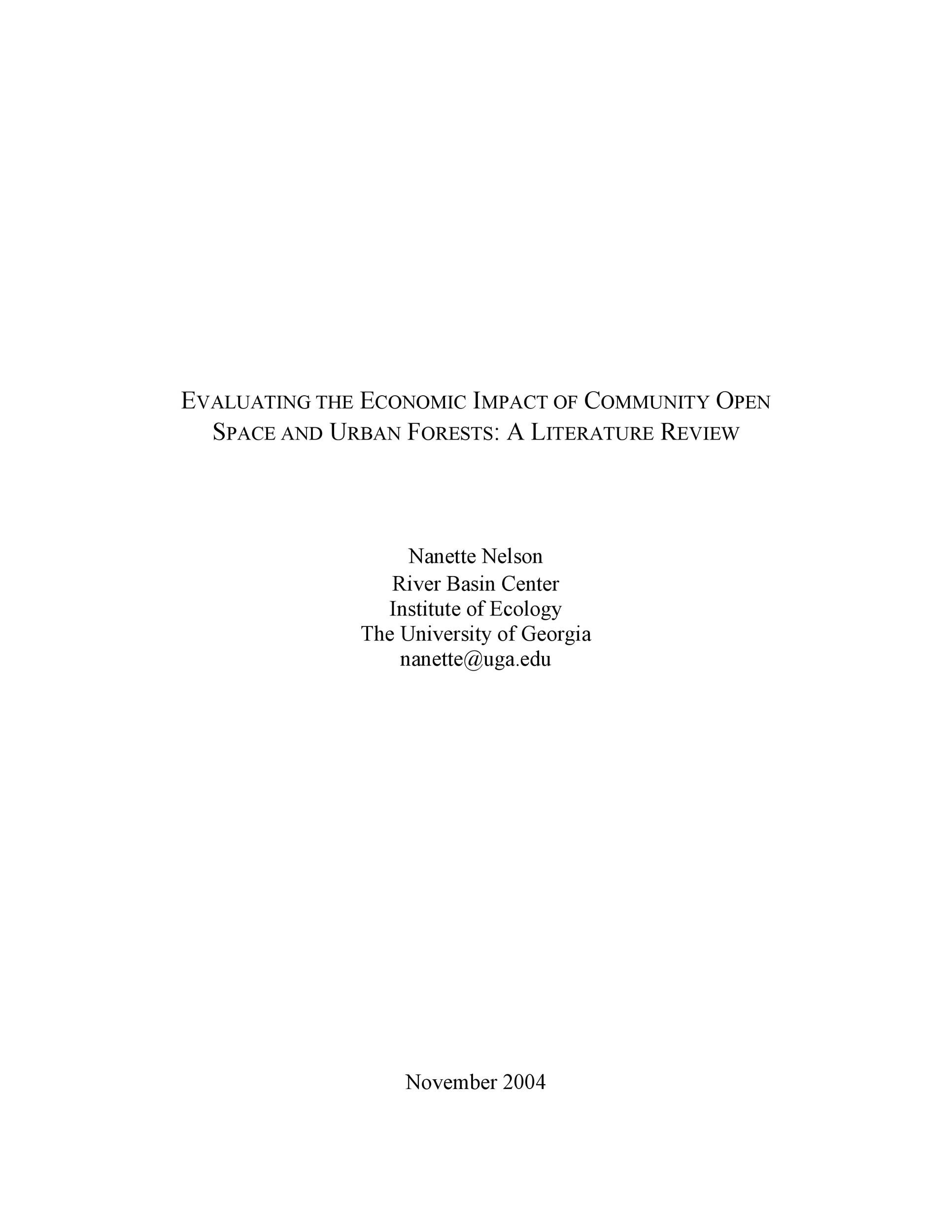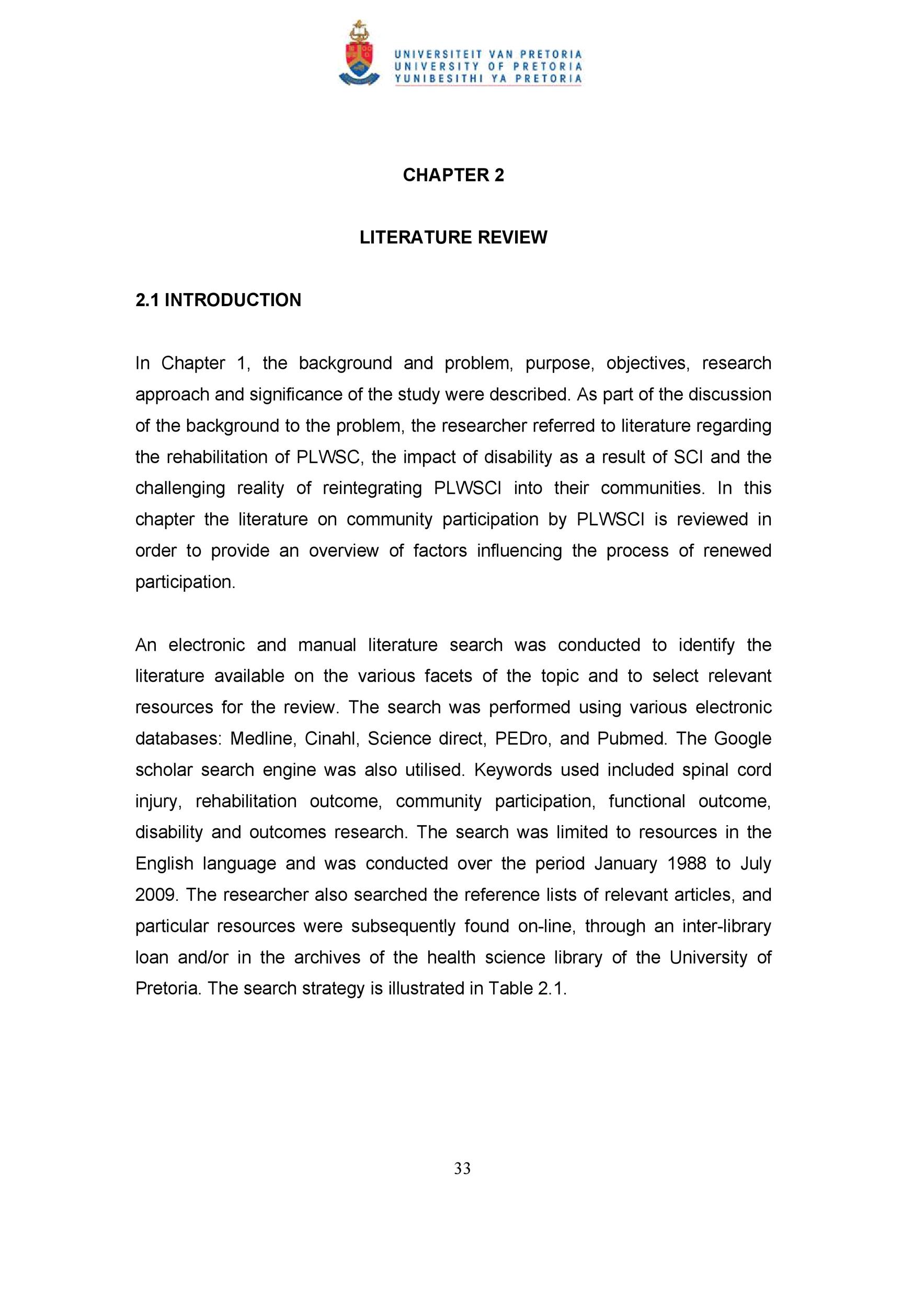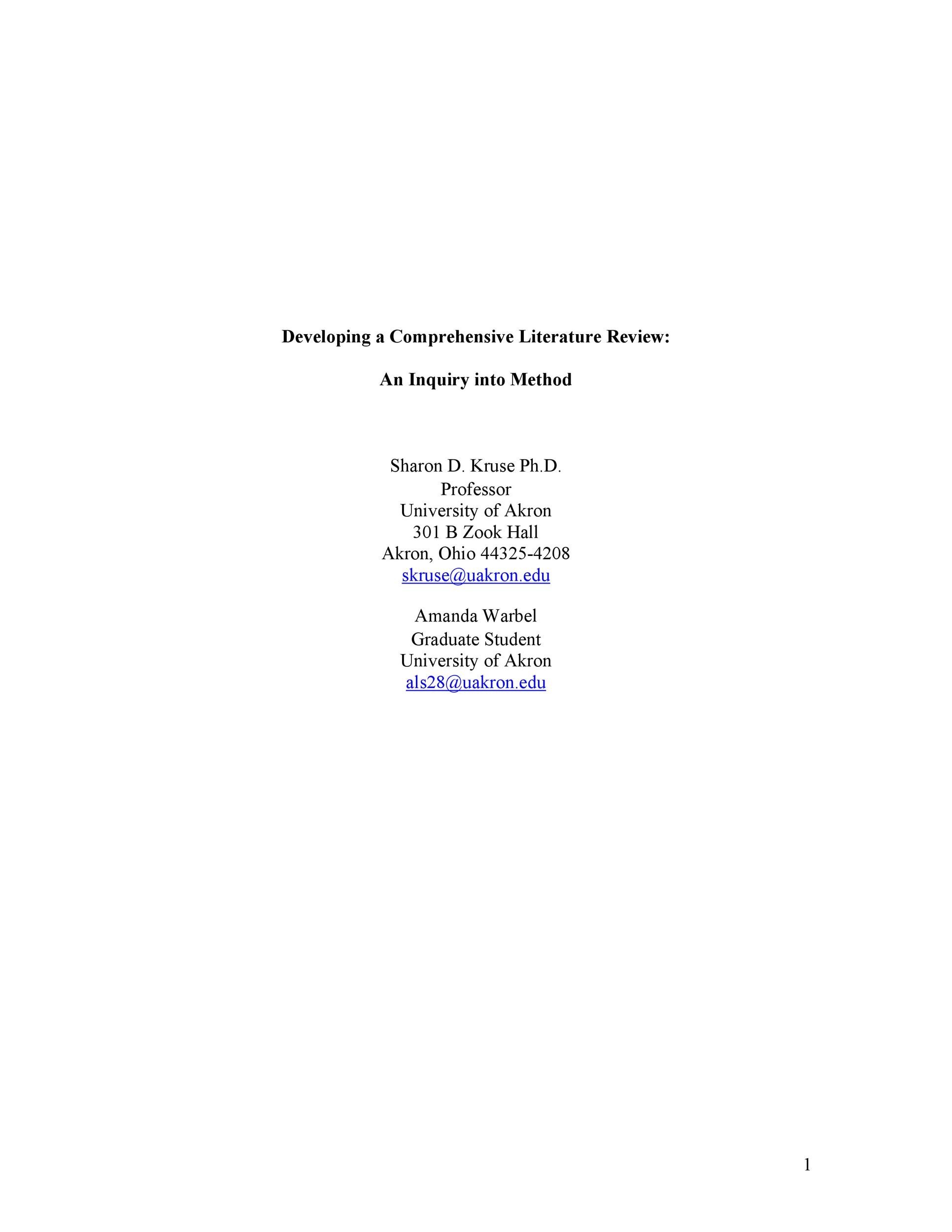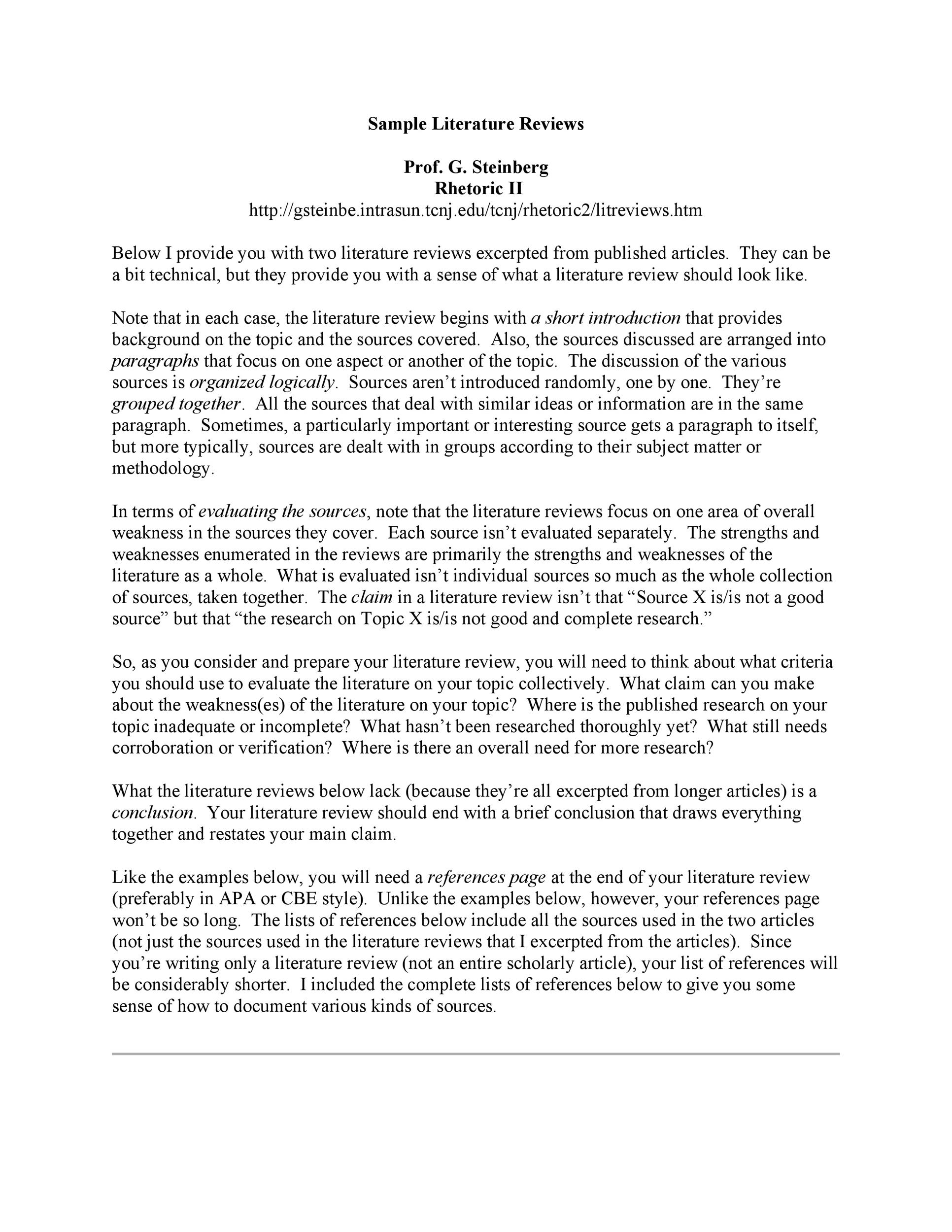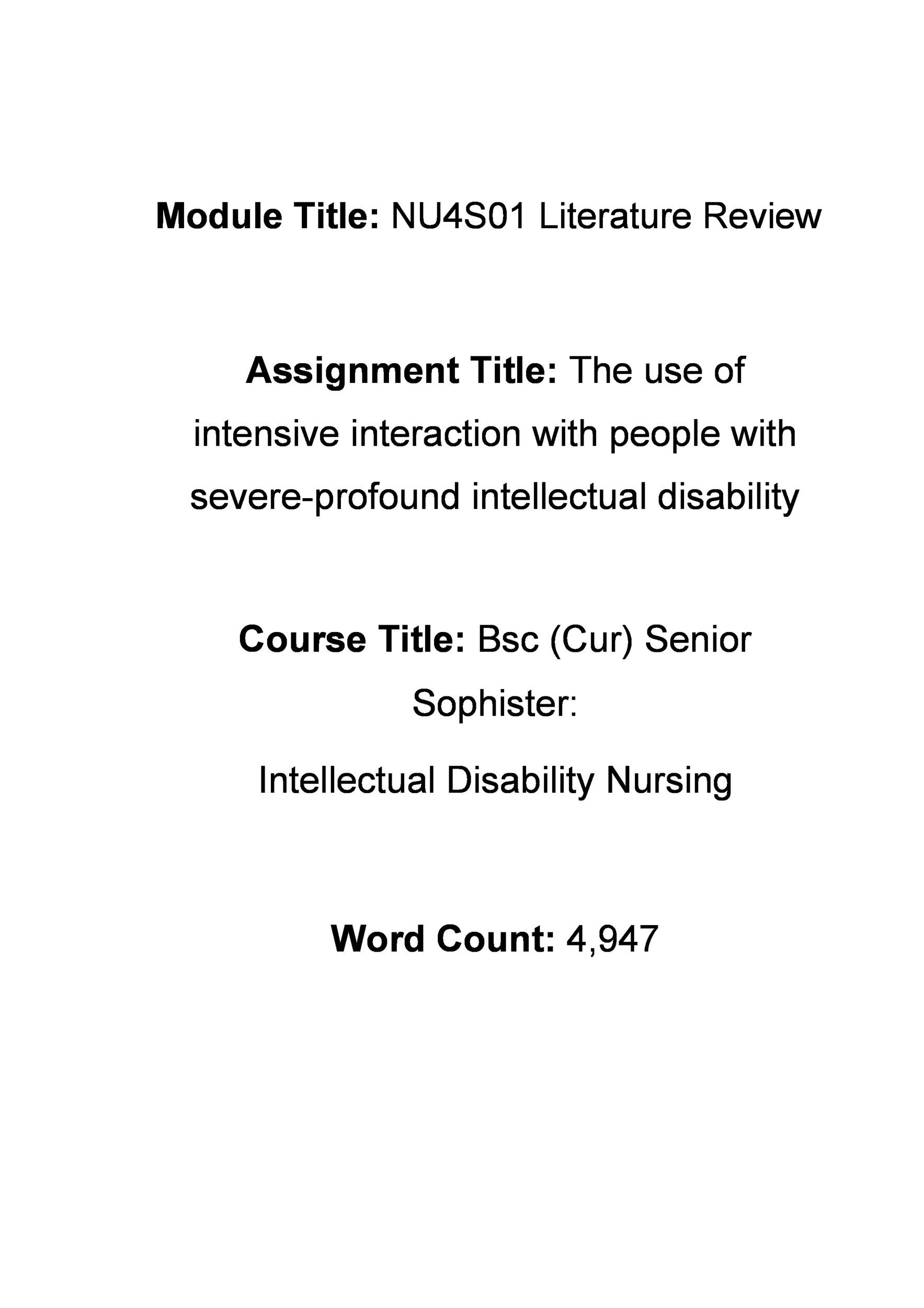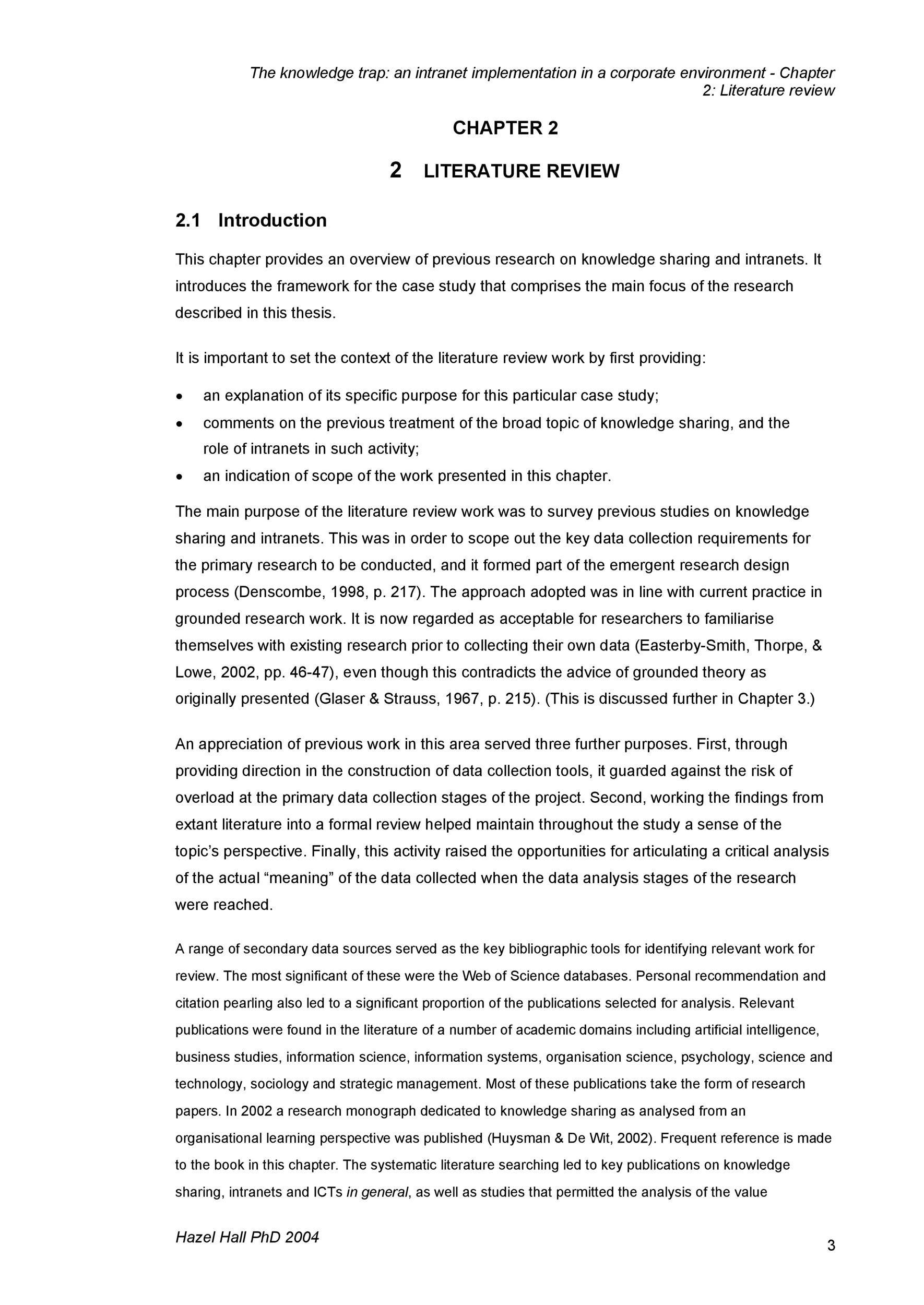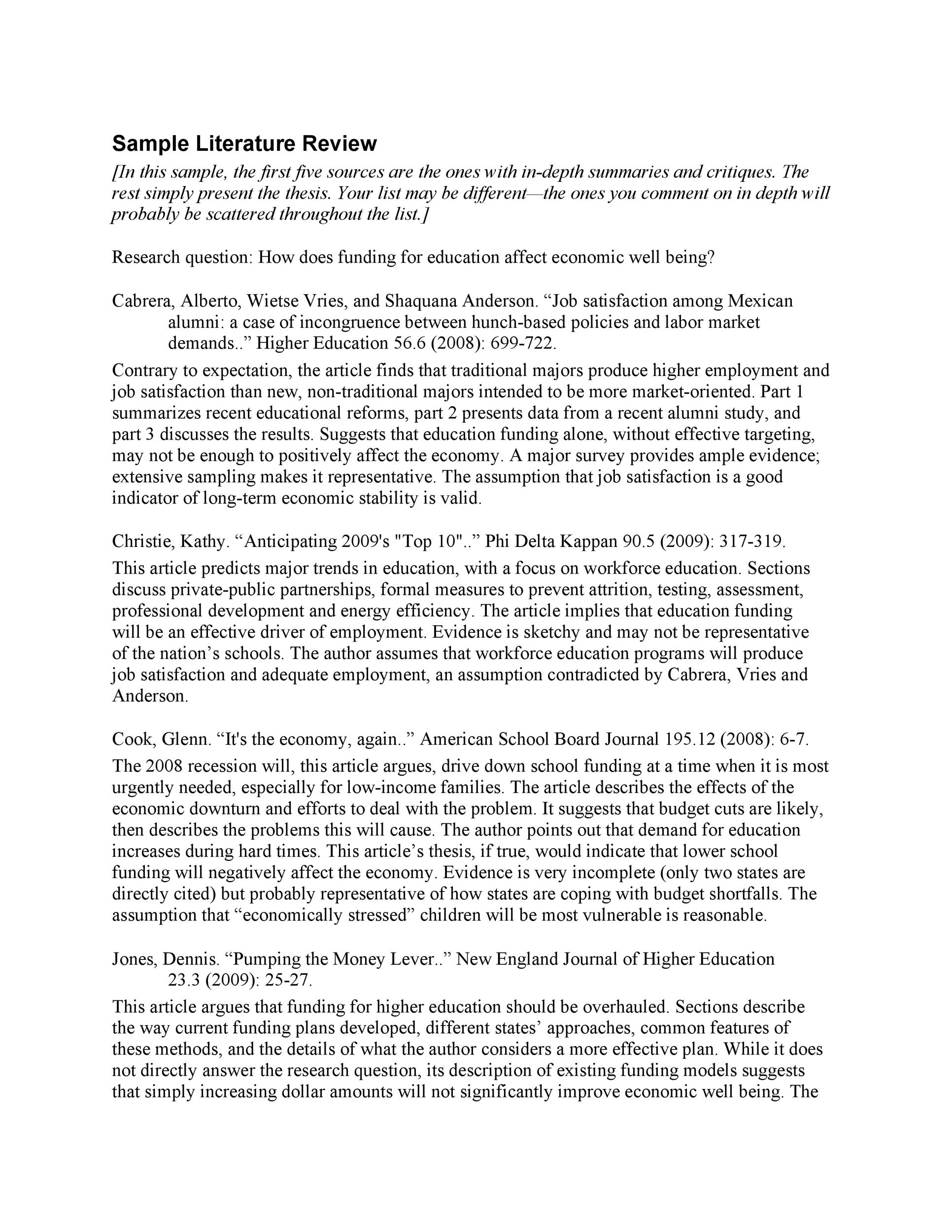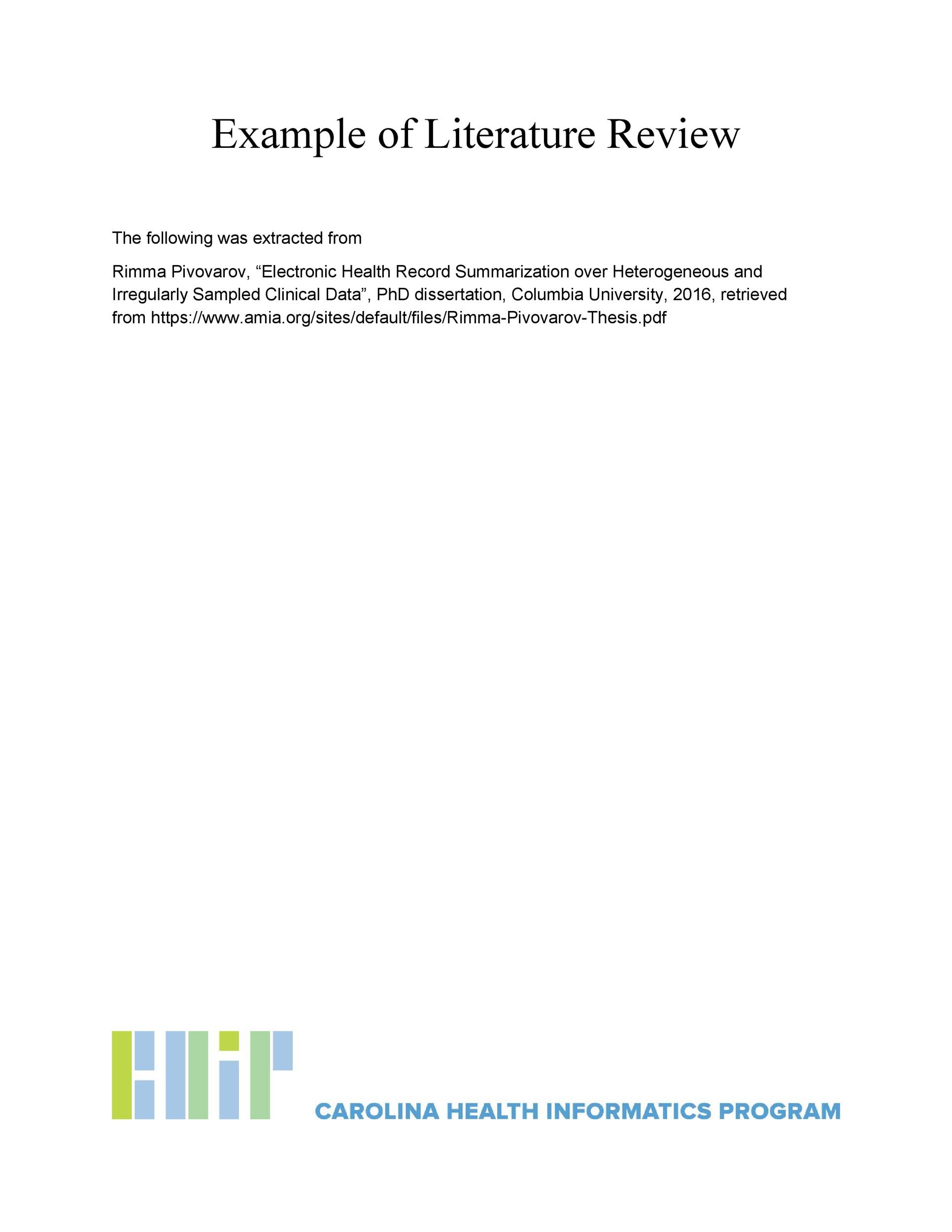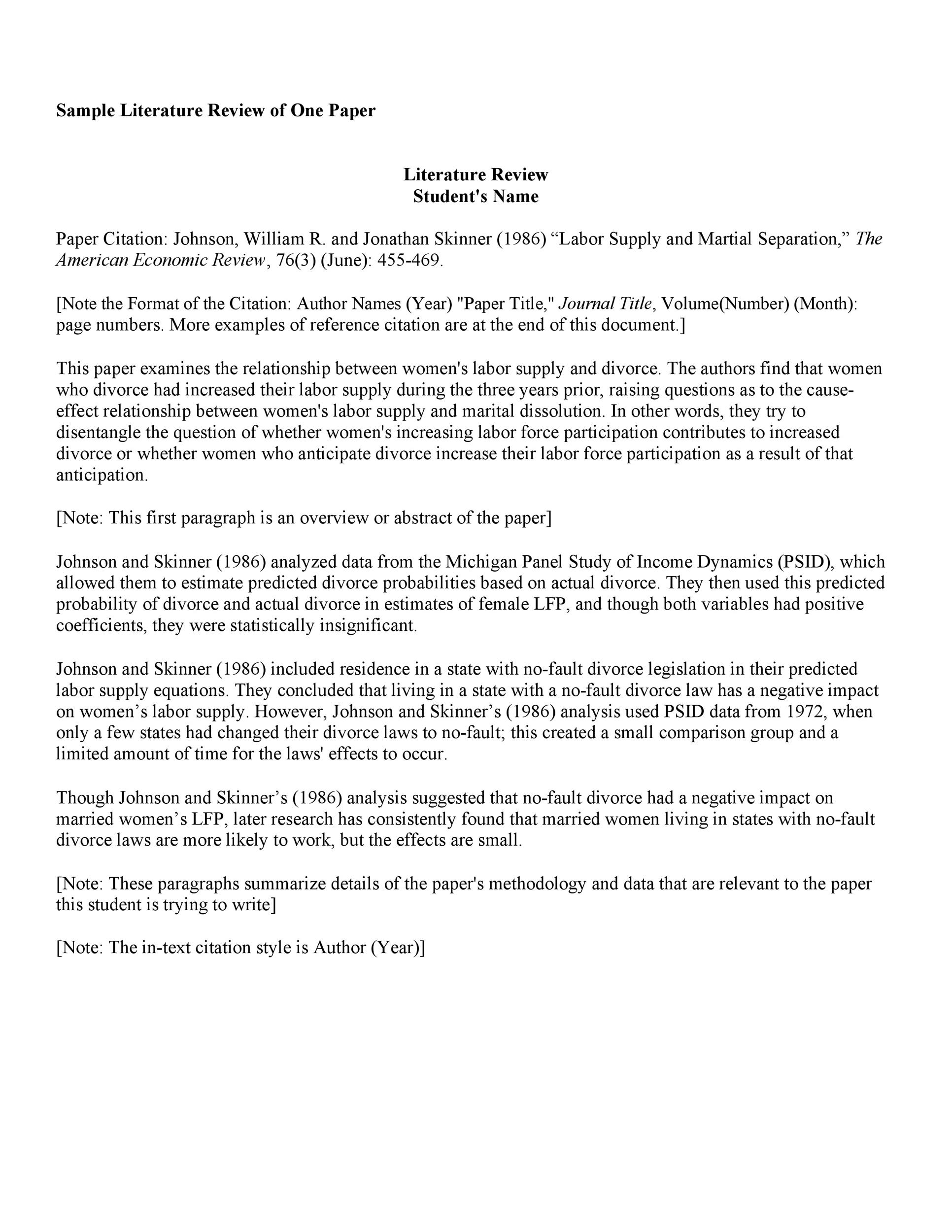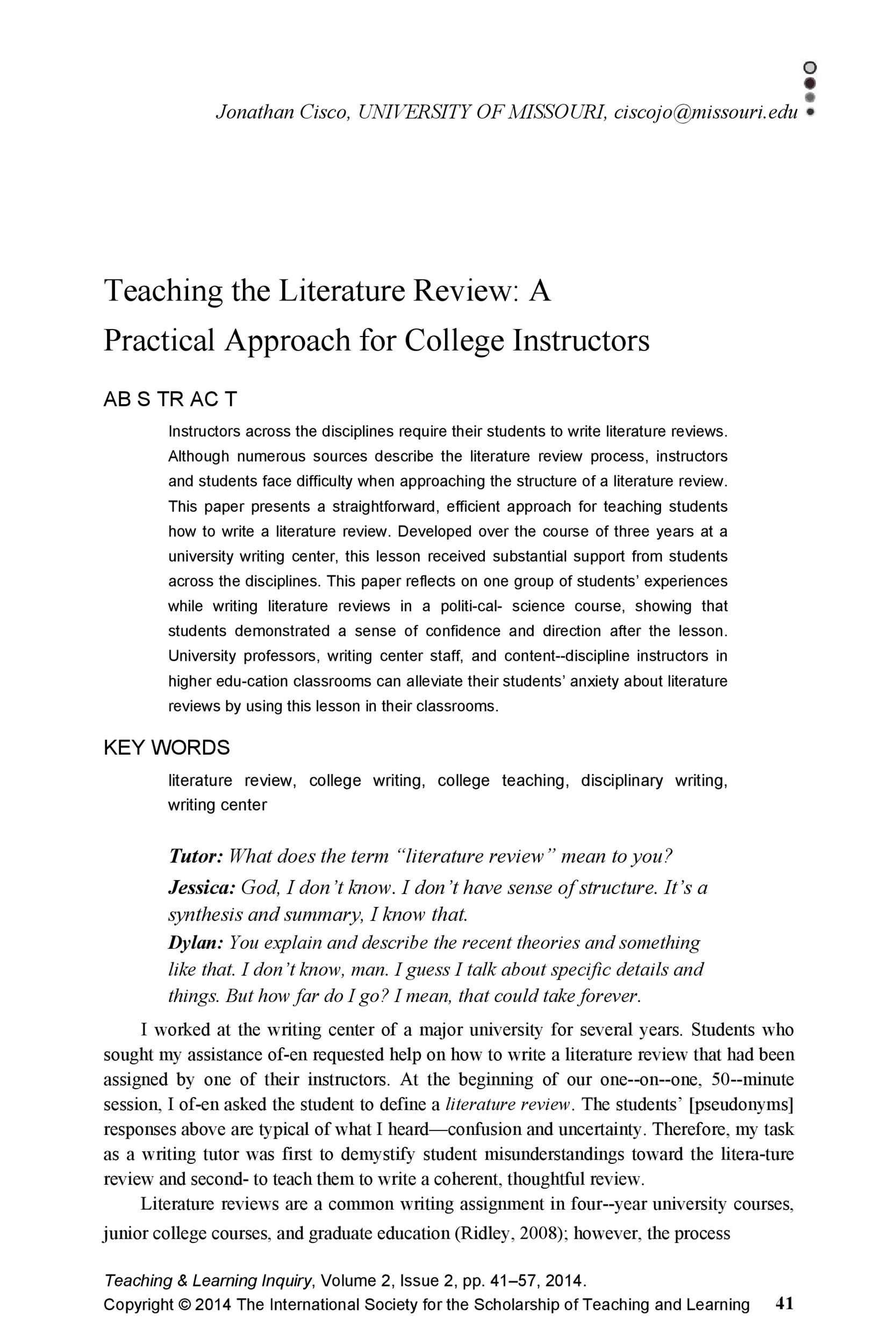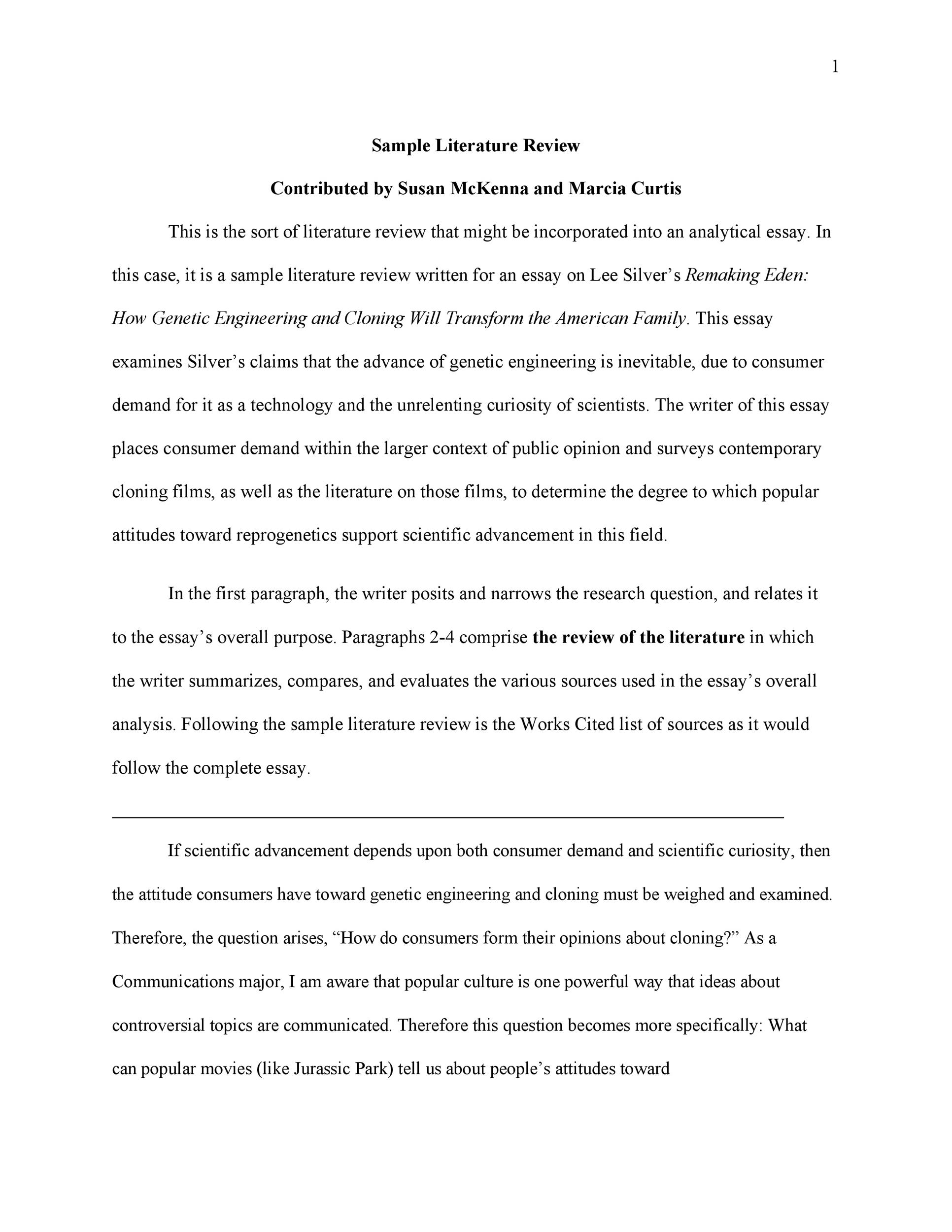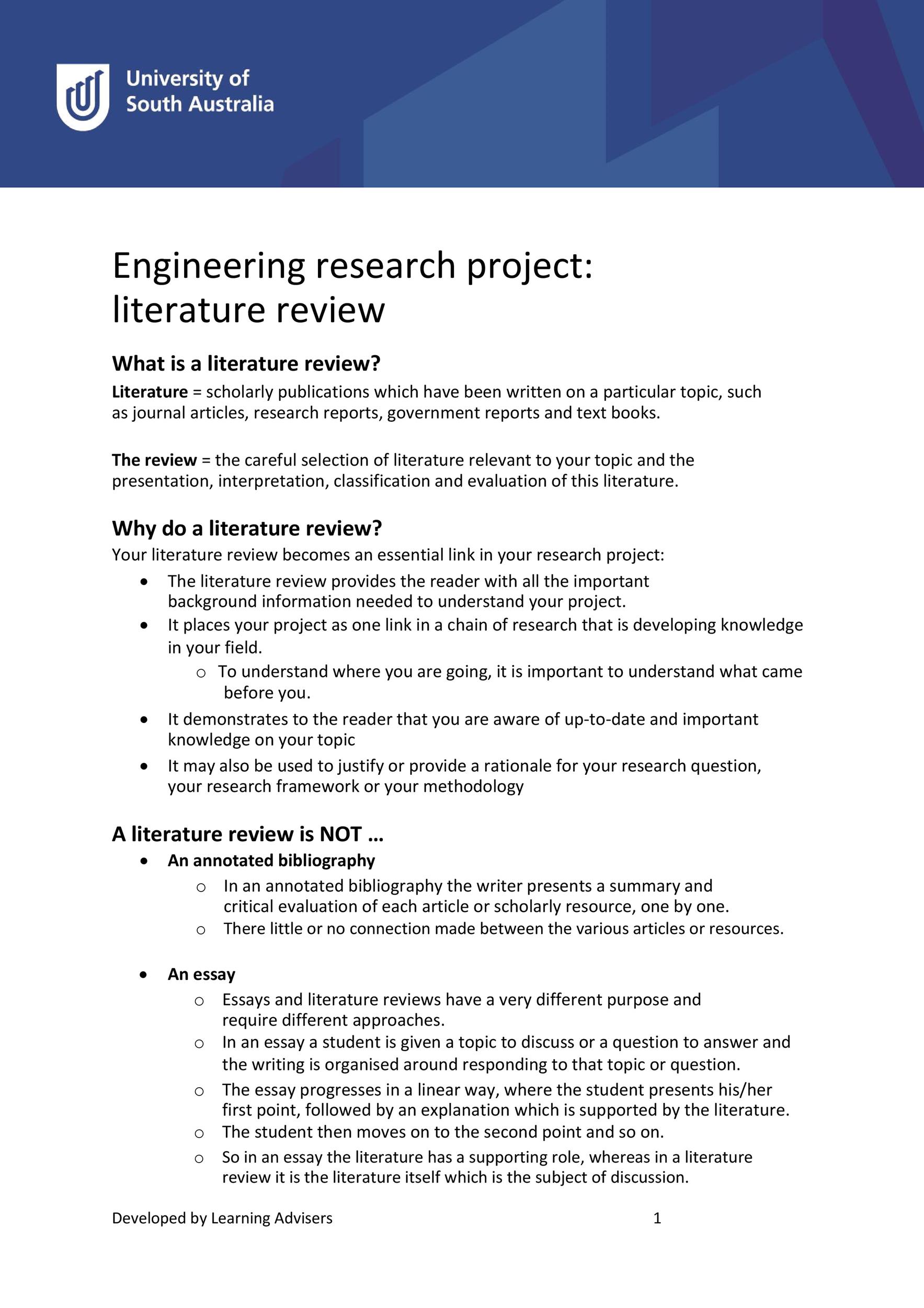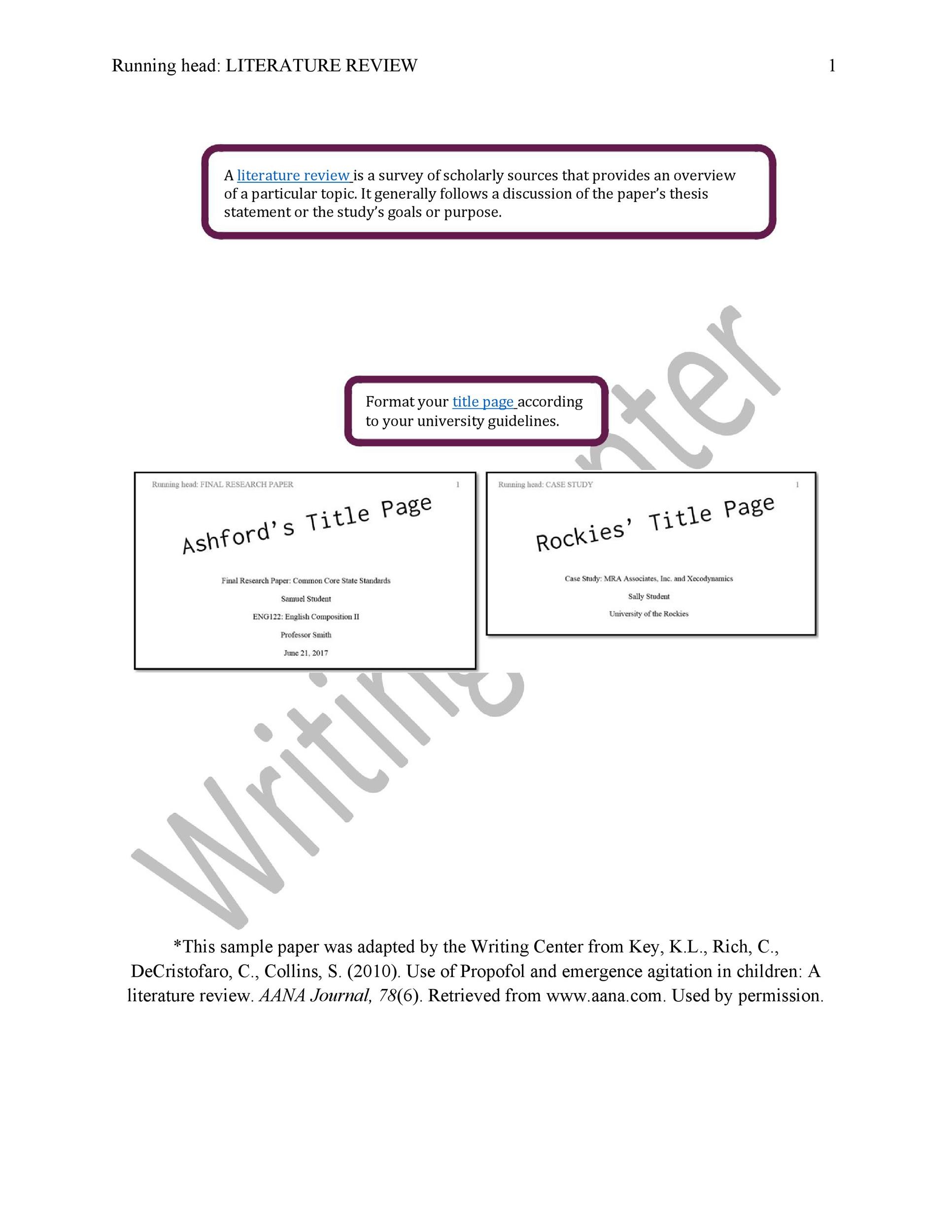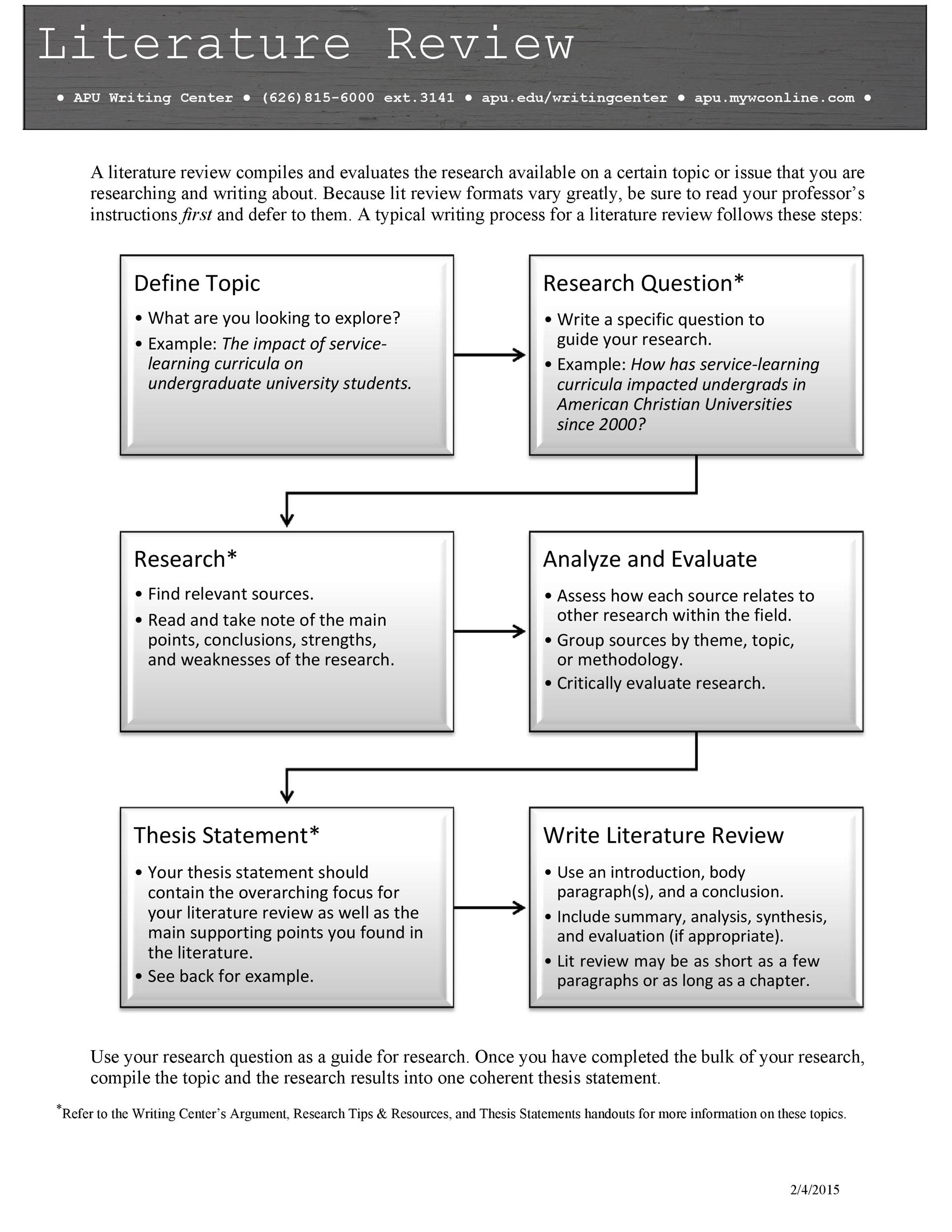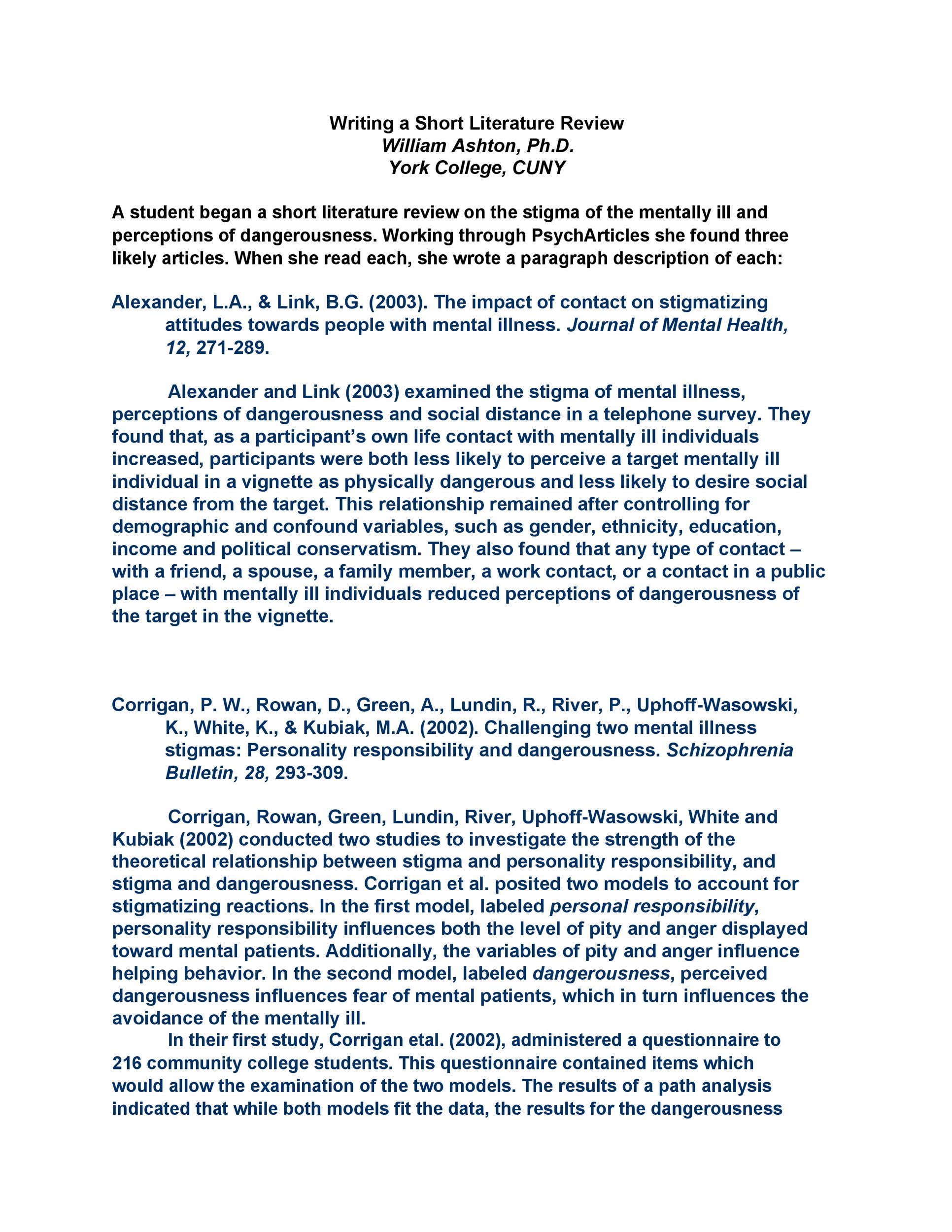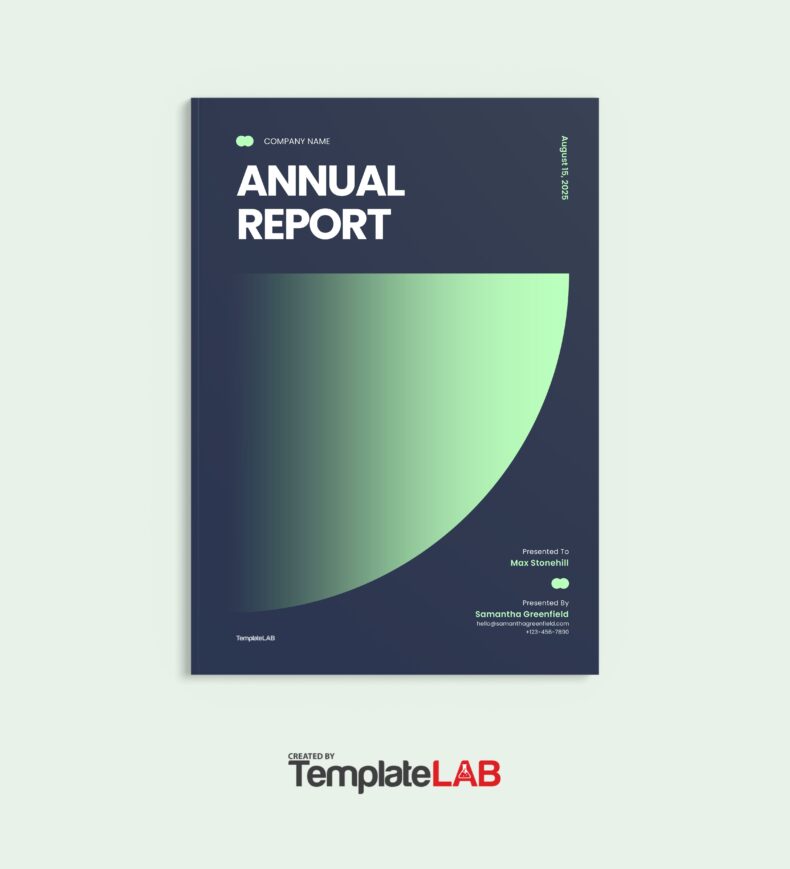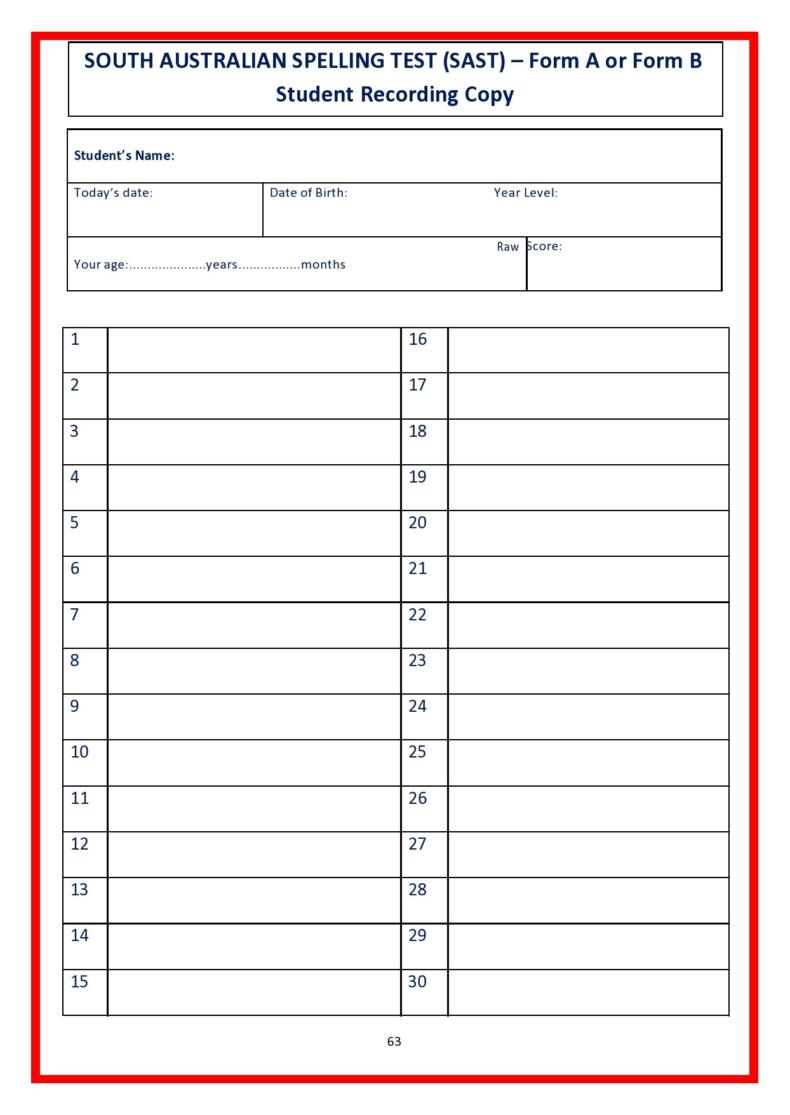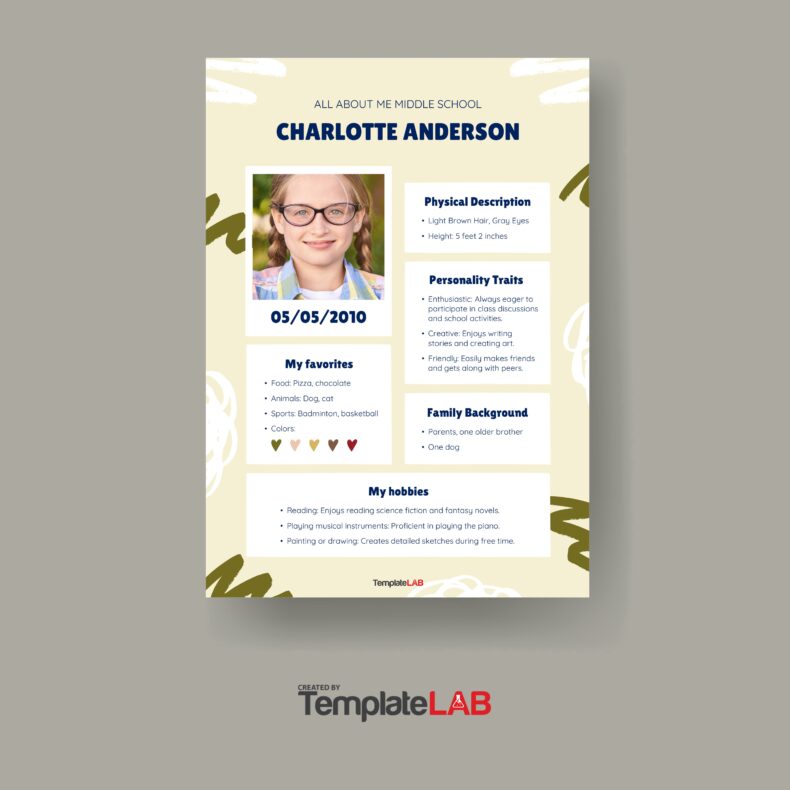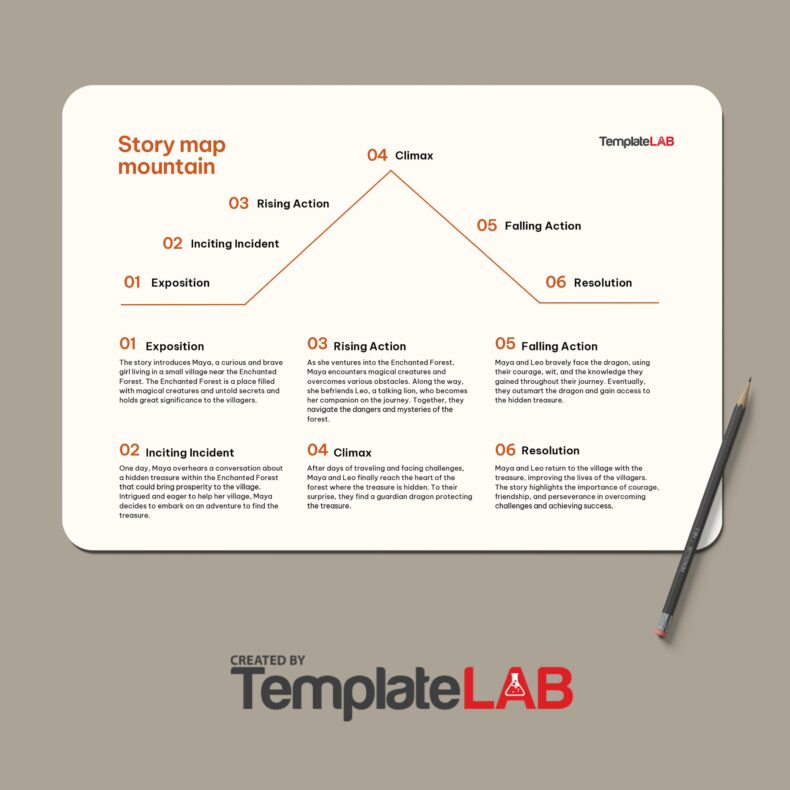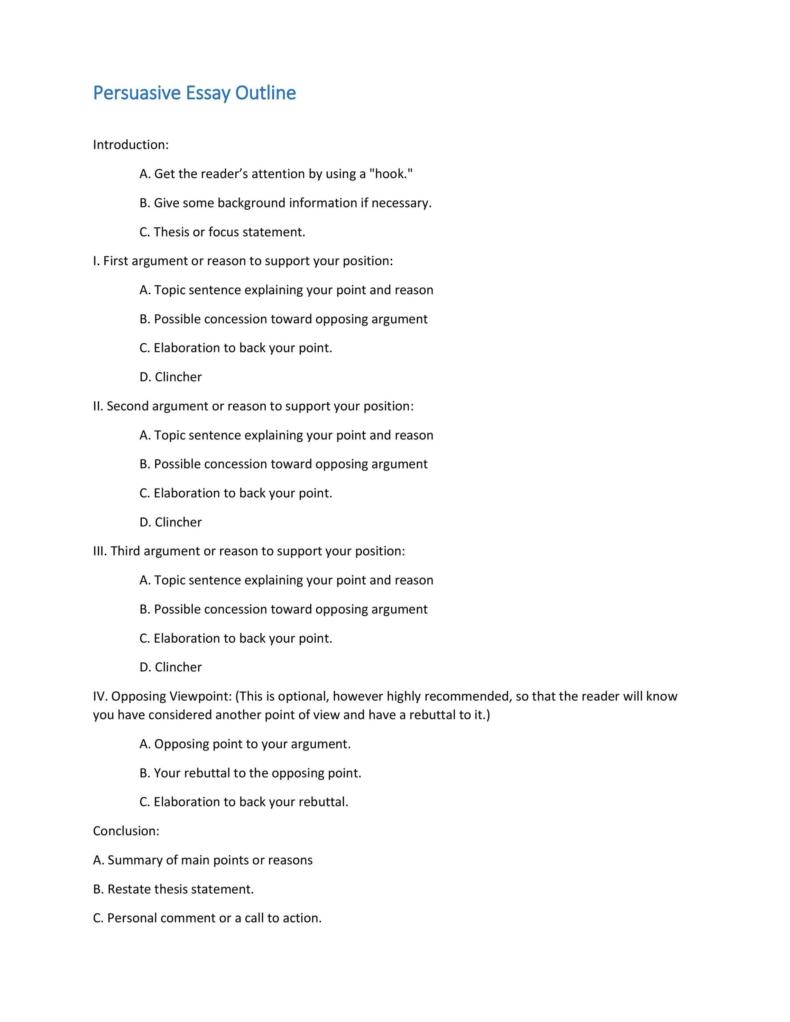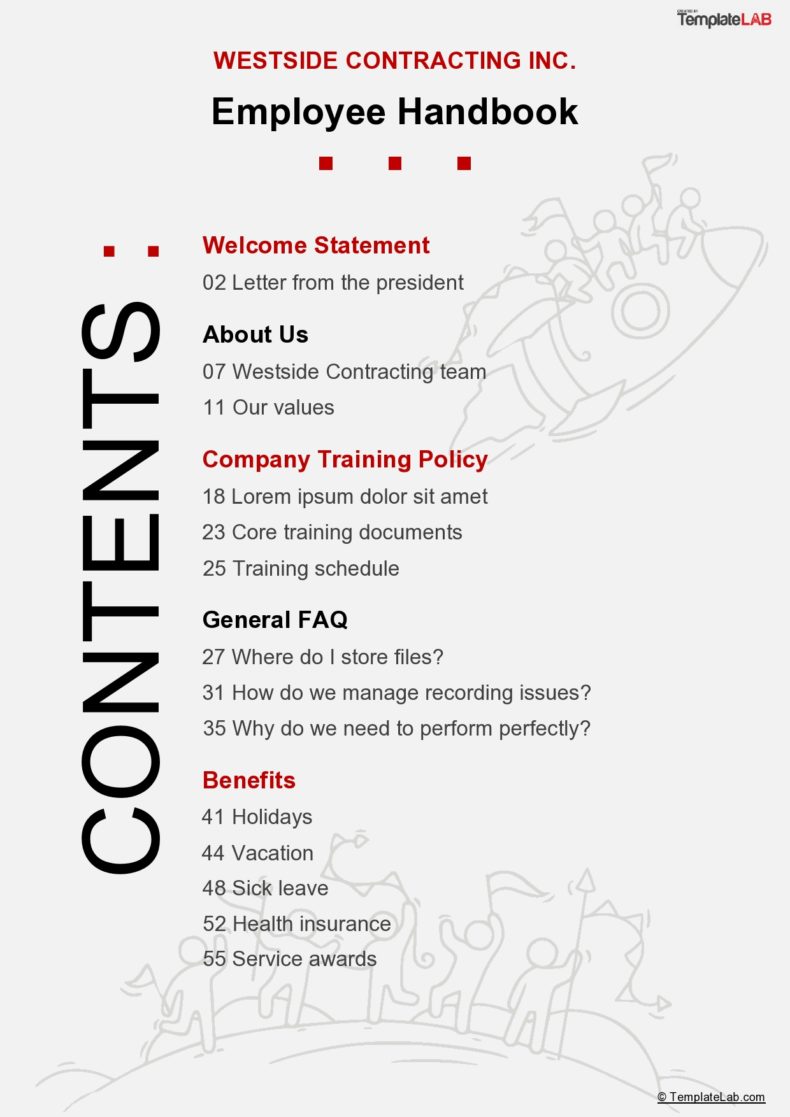A literary review template is a type of written work that discusses published information about a specific subject matter. The length of the review doesn’t matter. It can be as simple as a summary of sources or can be as long as several pages. An outline for literature review can also evaluate these sources and advise to the readers regarding what’s relevant depending on certain conditions.
Table of Contents
Literature Review Templates
Why do you need a literature review template?
A literary review template can serve as a guide about a specific topic. If you’re under time constraints to conduct more research, a literature review outline example can do you good as it provides you with an overview of what you intend to research on.
Even professionals of various fields rely on literary reviews to keep them updated in terms of what’s current in their fields. As for scholars, they can detect a writer’s credibility in a certain field by reading their literature review format. You can also use these works as a foundation for the investigation of a research paper.
Literature Review Formats
Tips for creating a literature review template
Literary review templates are surveys of scholarly sources on a specific subject matter. It gives a general summary of information relevant to a certain research problem or question. Here are the steps to follow when creating a literary review.
- Gather, assess, and choose the appropriate literature
Before researching for literature for a review, you must have a topic that’s narrowly-defined. If you were to write a review for some research work or dissertation, you have to gather information related to the research problem or question. Having to understand the state of knowledge of your subject is the first step in creating your outline for literature review.
Composing a literature review outline example for stand-alone research shouldn’t be that difficult. You only have to a good focus, then come up with a question that directs your search. This should be an answerable question without the need to generate or collect new data.
Start the process by making a list of relevant keywords for the research topic in question. Based on the list, whenever you discover useful articles, check your list of references to find other relevant articles. During this process, you can identify any significant publications which didn’t show up when you performed a keyword search through recurring citations.
It’s impossible for you to read all the available sources about a single topic. The best thing to do first is to read the abstract and determine if the articles are of any use. You have to do some evaluations on which of the sources are of value and relevant to the question.
Also, make sure to only choose credible sources. Make it a point to read major theories and landmark studies in the field of your research. Logically, your scope of work depends upon the discipline and topic you have chosen.
Make it a habit of writing down notes while you’re reading. Later on, you can incorporate these notes in your literature review format. Also, consider keeping track of the sources you have cited to avoid any consequential plagiarism cases.
Making an annotated bibliography is a good suggestion. Include here a written paragraph for the summary and the analysis for each cited source. This can also be very helpful in reminding you about what you have read. - Look for themes and connections
When you start organizing a literature review format, you should identify the relationships between all of the sources that you have read. Based on what you have read and the notes you have taken, look for:
Patterns and trends: Are there approaches which become less or more popular as time goes by?
Themes: Identifying concepts or questions that repeat constantly across the different literature.
Conflicts, contradictions, and debates: At what points do the sources disagree or agree?
Pivotal publications: Identify any influential studies or theories which affected the direction of the field.
Gaps: Try looking for answers for the following questions – What’s missing from the literature? Did you find any weaknesses that you need to address?
The answers to these questions can help organize the structure of the literary review. If applicable, you can include how your research contributes to the existing knowledge. - Plan the structure of your literature review template
You can organize the whole body of your literary review through various approaches but at this point, you should already have an idea of the strategy you want to use even before writing your review. Depending on how long your review will be, you can use the following strategies:
Chronological
This is the simplest strategy where you map out the development of your topic over a period of time. If you use this approach, you should avoid merely listing or summarizing your sources chronologically.
Make it a point to analyze the patterns, key events, and turning points that have influenced the direction of the field. If possible, give your own ideas about why and how certain developments came to happen.
Thematic
If you’ve discovered, in the course of your research, some recurring themes, you may organize your literary review into subsections which address the different parts of your topic.
Methodology
When you’re drawing your sources from various fields or disciplines which use different methods for research, you may end up with different conclusions and results. Perform analysis and try to compare these results that emerged from the different approaches.
Theoretical
In many cases, a literary review becomes the basis for theoretical frameworks. You may use this to talk about various definitions, theories, and models of important concepts. You may even argue about the significance of a theoretical approach or you can combine different theoretical ideas to come up with your own framework for research.
Outlines For Literature Review
Compose the literature review
The literary review isn’t any different in form from any other kind of academic texts as it also has the basic parts. What you included in each would depend upon your objective for writing the literature review:
- Introduction
This part should clearly define the purpose and focus of the review.
Dissertation: If you wrote the review as a part of a thesis or dissertation, you must reiterate the research question or central problem. Provide a short summary of the context as well.
Stand-Alone: When writing this type of review, provide a short background regarding the topic along with its significance. Talk about the scope you plan to review along with your objective. - Body
If you have a lengthy review, it’s best to divide this part into sub-sections then come up with a subheading for each of them. - Conclusion
State in the conclusion, a summary of the key findings you have derived from the literature and emphasize their significance.
Dissertation: Demonstrate how your research can address gaps and how it can contribute to gaining new knowledge. You can also discuss how you have used existing theories and methods to build a framework for your research.
Stand-Alone: Discuss the overall effects of the literature or make suggestions for future research based on those gaps you have identified in your review.
Strategies for composing your literature review template
Most people write literature review templates in the sciences although occasionally, some are in the Humanities. In many experiments and laboratory reports, literature reviews constitute a section of the document. At times, some people write the review as the paper itself. Here are some strategies that may prove helpful when tasked to write a literature review:
- Find your focus
Although they can differ, a literary review is like a term paper as you would organize both around ideas, not the sources themselves. This means that writing a review is not merely about listing your sources and going into their details one at a time. You also have to consider the themes and issues that connect your sources together. - Convey your message
Literary reviews may not have the usual thesis statement but you still need to inform your readers what to expect. Writing a simple statement is enough to let your readers know what your main organizing principle is. - Organize the information
There are instances when you may need additional sections in your review which are necessary for the study but don’t fit into the body’s organizational strategy. This depends on which sections you want to include. Only put in those that are necessary. To help you out, here are some sections that you may want to include in your review:
Current Situation: This refers to the information that’s necessary to easily understand the focus or topic of the review.
History: The chronological progression of the field, the literature, or an idea that’s necessary to understand the literature review. Include this only if the body isn’t already arranged chronologically.
Methods or Standards: What criteria did you use to choose the sources in your review or the manner in which you want to present the information.
Questions for Further Research: Are there questions about your field of research the review had sparked? Based on the review, what steps can you take to advance your research?

